






It’s we what








It’s we what
Tom Foster - Editor
’m often amazed by the sheer mass of tools some riders carry.
I’m the first to admit I’m often the one who benefits from the hardware others have on board – hardware I myself neglected to pack or declined to carry. But it’s not always the catalogue of tools I see that amazes me. Sometimes it’s the individual tools that have me goggle-eyed.
I come from a predominantly enduro and trailriding background, so in my formative years I was taught to fight against every gram of unnecessary weight. It was ingrained into me that every skerrick of additional ballast, no matter how tiny, would contribute to the overall difficulty of steep hills, bogholes and dealing with obstacles. From a racing
point of view that extra weight meant more energy I had to expend to keep the bike moving as fast as I could, and it meant a sacrifice in handling and performance from the bike itself.
So I learned to look for opportunities to save space and mass. I’d cut tools up and weld the bits together so I had the same amount of room and weight taken up by something that would do several jobs instead of something that would only do a single job.
I’ve had to modify my approach a little since I moved into adventure riding. The performance of adventure bikes now is such that my stubby little cutdown tyre levers with the axle-spanners welded on the ends just can’t deal with the tyres and rims needed to cope with the horsepower on offer. I need more leverage to get those tyres on and off. And where two ring spanners with different sizes on each end – so four different sizes – would cope with just about everything I’d need to do in an emergency on a race bike, these days I need a selection of Torx drivers, sockets and open-enders as well. Thankfully there are some really excellent mutlitools on the market now, and I think I carry two or three different types, along with a really
good-quality shifter when I can, and a brilliant, tiny socket/allen-key/Torx-drive set I bought from Andy Strapz. It’ll fit in a regular-size pocket.
So it brains me when I pull up beside a problem and the rider starts unpacking full-length tyre levers, complete socket and spanner sets, a chainbreaker, vice grips and a heap of other things I only have in the shed. I would never consider carrying those big, heavy items.
Sometimes I feel the weight of those toolkits must be close to weight of some of the bikes I’ve ridden.
But then I see how easy it makes the
“I’d cut tools up and weld the bits together so I had the same amount of room and weight taken up by something that would do several jobs. ”
repairs. I start to wonder if I’m being a bit narrow-minded. I mean, these bikes have something like half-a-million horsepower, and the suspension on even base-model bikes is far in advance of anything I even dreamed of when I was trying to ride fast. The bikes should be able to carry that gear, right?
And I’ve been the one whose fat was pulled from the fire by some of these Samaritans often enough. Maybe I should learn a lesson?
Yeah…nah.
I can’t bring myself to carry huge chunks of metal to cover a single situation that may only arise once a year.
Naturally, the best situation is to team up with a group and share the tools around so everyone carries something and no-one has to carry everything. But I ride alone a lot.
As usual, the best I can do is compromise. I’ll continue to try and combine tools and make sure everything I carry has multiple uses, and I’ll do lots of research to find quality tools made from lightweight alloys.
Most of all, I’ll keep trying to ride with great people who I know carry a tonne of equipment and who know how to use it.



With each essential element refined, the Latitude series is the ideal touring companion. Mastering protection, ventilation and adjustability, the Latitude is perfect for your next Australian or International odyssey.

From the inside out KLIM has engineered the core of the Badlands Pro DNA to be fit for the toughest adventure. The new jacket & pant incorporate breakthroughs in armour impact, armour coverage, comfort, performance, ventilation, storage, allweather functionality, abrasion resistance, durability and visibility.
Designed for the toughest Adventure Riders, who overcome the harshest of Australian elements.

The Artemis women’s adventure series is robust and equipped for intercontinental travel, whilst being comfortable enough for all day explorations. The Artemis features stubborn durability, excellent cargo capacity and a custom-engineered, female-specific, comfort-mapped ventilation system, featuring ten adjustable ventilation ports, all whilst holding true to KLIM’s 100% waterproof guarantee.




A rugged, stable, universally fitting, affordable, waterproof, rack-mounted motorcycle soft luggage solution for virtually all motorcycle makes and models. Suitable for our new X-Frames.


Security tie-down straps with a steel core and weather resistant stainless cam lock.

From the makers of the popular Adventure Skiveez Comfort Shorts, introducing the new ¾ length compression base layer. With Moto-Skiveez padding technology, the Performance Adventure Pant will keep you comfortable on those long days in the saddle.
Is the perfect choice for the demanding adventure or sport-touring rider looking for the greatest illumination distance. With a powerful 10-watt Cree LED and a large reflector, the DENALI DR1 casts a powerful beam 300m down the road.

Our range of pannier frames are designed to fit soft luggage systems, including Giant Loop & Wolfman Luggage pannier bags, Rotopax & some hard boxes.

The Hawk II is a two person, freestanding, four season tent. Lightweight and compact, the Hawk II is ideal for adventure riding, winter camping, backpacking, mountaineering and alpine conditions.

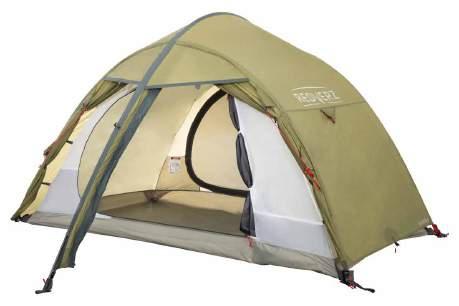



Expedition Dry Duffel
The Wolfman Luggage

Expedition Dry Duffel bags are made from tough, waterproof vinyl and are available in three different sizes to suit your packing needs.
EARN REWARDS & FREE SHIPPING ON THESE PRODUCTS WITH COUPON*: ADVRIDER27 OFFER EXPIRES: 5TH OF MAY 2018

Adventure Rider Magazine is published bi-monthly by Mayne Media Group Pty Ltd
Publisher Kurt Quambusch
Editor Tom Foster tom@maynemedia.com.au
Group Sales Manager Mitch Newell mitch@maynemedia.com.au
Phone: (02) 9452 4517 Mobile: 0402 202 870
Production Arianna Lucini arianna@maynemedia.com.au
Design Danny Bourke art@maynemedia.com.au
Subscriptions (02) 9452 4517
ISSN 2201-1218
ACN 130 678 812
ABN 27 130 678 812
Postal address: PO Box 489, DEE WHY NSW 2099 Australia
Website: www.advridermag.com.au
Enquiries: Phone: (02) 9452 4517
Int.ph: +61 2 9452 4517
Int.fax: +61 2 9452 5319


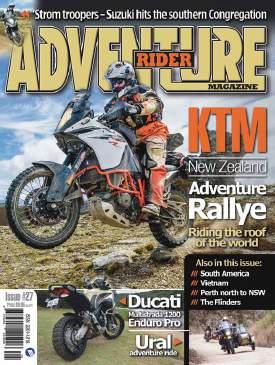



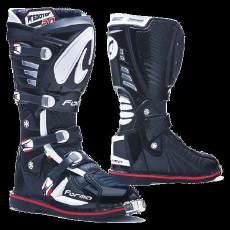





Rideaway today on a Triumph TIGER 800 or 1200 EXPLORER and recieve up to $5,500* in extra value on selected models across the adventure range. Choose your model below and see the MASSIVE BONUSES including FREE PANNIERS and SPECIAL RIDE AWAY PRICING. It’s your ride, it’s your journey, and it’s your planet to explore. So whether you choose motorways or mud tracks twisty tarmacs or bumpy town streets, Triumph’s range of adventure motorcycles all share your passion for travel and discovery.


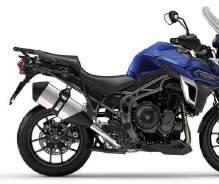
























The second KTM New Zealand Adventure Rallye was held in the Otago region. Danny Wilkinson and his camera were there to capture and enjoy the amazing, incredible riding paradise.



The South Island of New Zealand may not appear very big on the map (at least by Australian proportions) but if the mountains were flattened out, the story may be a little different. It seems as though intrepid Kiwis have forged tracks over each and every one of those vast mountain ranges and the result is an adventureriding Mecca, especially if you hold the key to the gates. Thankfully, we were treated to a myriad of trails, quite often through private property, unlike anything I’ve ridden in Oz. It seemed like we were always either ascending or descending a series of panoramic vistas and the only relatively flat trail we did for the entire week was through the Nevis Valley, which was hemmed on either side by expansive highlands.
It isn’t just adventure riders who are keen to take in the spectacle of New Zealand. Many small towns are inundated with tourist buses and the well-known sights are a hive of camper-van activity. As Jeff Leisk pointed out in his introduction to the event, adventure bikes are about mobility – the ability to escape the crowds and access places that aren’t
on the regular tourist route.
And for that reason, I couldn’t think of a better way to explore such an amazing country.
For 2017, the Rallye ran for five days starting at the base of Mt Cook and finishing in the bustling tourist hub of Queenstown. Organised by the experienced crew from KTM Australia and New Zealand, the Rallye followed the familiar GPS format with optional breakout tracks for those seeking a challenge. The Rallye attracted 110 riders and two slightly crazy pillions who were often found on the breakout routes smiling and clinging on tight.
Behind the scenes there were medics, lead riders, sweeps, technical support, a videographer, photographer and support vehicles to transport luggage. And then there was Chris Birch.
As a designated KTM Adventure Ambassador, Birchy roved through the
u




pack providing help where it was needed and generally doing things on a 1090 that defied gravity. Otago trail pathfinder Joe Forsyth was also pivotal to the event’s success. His track knowledge was amazing, and he drew on his extensive network of contacts built on the back of many years goodwill to gain access to large tracts of private land where riders could test their skills against some challenging trails. With optional breakouts graded on the Chilli system, riders could work out if they wanted to have a crack at them or stick to the main route. It was great having the option to pick and choose your path during the day by following either the orange or green arrows.
Chris Birch explained the rating system and it made sense in a very practical way: 1 Chilli – Should be achievable in a Rav 4 2 Chilli – Still passable in a Rav 4, but it’d better be stolen
3 Chilli – You really ought to be on an EXC and know how to ride it
In line with the high level of ability on the ride, plenty opted for the harder breakouts, but there was some carnage along the way. I had a crack at one of the 3 Chilli routes, but I’ll be honest, the 2 Chilli options were closer to my comfort level on a big bike.
Mt Cook to Alexandra
We were Fortunate to leave Mt Cook on a clear day. It was hard not to sneak an extra peak in the mirror as we headed south along the winding bitumen towards Black Forest Station and the pass that skirted around Lake Benmore. Recent rains had the creeks flowing and there were plenty of opportunities to get wet boots (and bikes for a few unfortunate riders) along the way. A dead wallaby beside the track had me thinking he’d either swum a really long way on

his own, or I’d need to rethink my attitude towards the wildlife I may need to dodge.
It was in Alexandra I discovered the wonders of NZ convenience stores.
It seemed the old-fashioned ice-cream bar was flourishing among corner stores and seeing as New Zealand is the home of hokey-pokey ice cream, it would’ve been almost rude not to sample a cone or two!
Greg Fallon’s day took a turn for the worse early on in Alexandra. Twelve months to the day since he wrote off his last bike, he was taken out by a wayward U-turn, injuring his ankle and eventually earning him the Black Cat award at the presentation dinner for his less-than-fortunate run. Earlier on day one he’d scored a flat and Birchy did a bit of trail-side panel beating with a rock to straighten his front rim. At least he doesn’t have to worry about those tyre-lever marks anymore. u



16 – 18 March, 2018 –
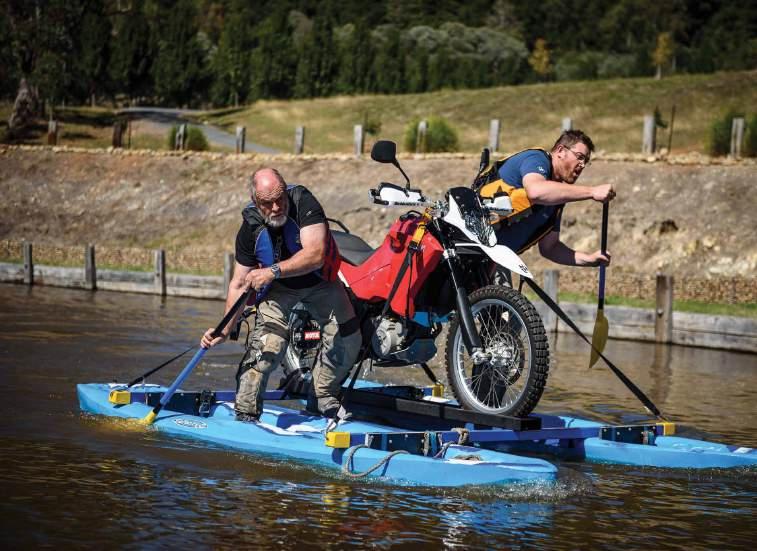
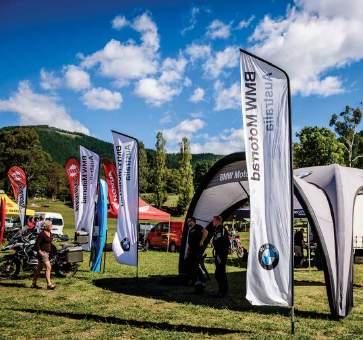
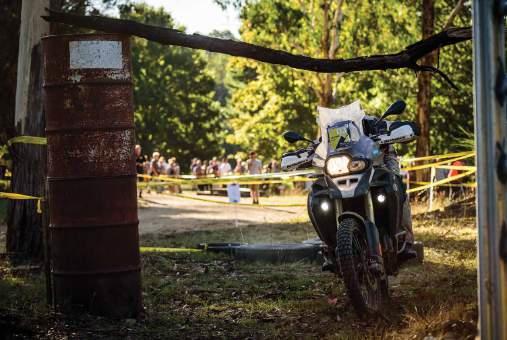
Take in autumn in the iconic Alpine region! Mingle with manufacturers and suppliers in one beautiful location, while enjoying our festival of events.
➜ Manufacturer displays
Test rides
Accessories
Adventure Challenge
Presentations ➜ Show & Shine ➜ Food & Entertainment ➜ On-site camping







The ride through the Serpentine Mining Reserve was the highlight for the second day. At over 1000 metres the area was home to gold-mining exploits in the 1860s and there were a few relics to see. It was a track that was particularly easy to get into mischief on, though. While fairly flat by South Island standards, it would be incredibly boggy when wet, creating ruts deep enough to swallow an 1190. V8 Supercar icon Greg Murphy was along for the ride and unfortunately his Rallye ended when he got caught in a nasty rut, damaging his ankle. Bruce Middleton had a little difficulty putting his jacket back on after an altercation with another ugly rut. Bruce had celebrated his birthday the day before and I suspect he suddenly felt a whole lot older. It was great to see him still laughing though, even when his mates were quick to stir about the ease with which one of the pillion crews had just tackled the same obstacle.
The third day was the favourite for many, consisting of a spectacular mix of terrain and scenery. It kicked off with a stunning ride through farm tracks in the Bendigo gold region and then, as if not to be outdone, climbed to the top of Old Man Range, leaving riders’ heads literally in the clouds. Rolling on the alpine breeze, the clouds would part and reveal the river below that
Above: Chris Birch used a rock to straighten Greg Fallon’s front rim and get him going again.
Left & below left: There were plenty of opportunities to get wet boots (and bikes for a few unfortunate riders).
looked miniscule in the distance. The view from the top was spectacular, but the descent was something else.
Not having a great head for heights, I admit my knees got a little shaky as we slipped and skidded our way down the single trail to the valley floor. After 15 minutes of going straight down we were still towering above the wide river below, making it appear more like a trail of ant wee than a flowing torrent.
Pulled up at a gate, I commented on just how far up we were and one of the Kiwis piped up with, “Just don’t look down”. I didn’t fancy my chances of rolling down the rest of the hill blindfolded and decided my method wasn’t so bad.
The afternoon saw us passing over Old Woman Range followed by a descent through Craigroy Station. It was such a beautiful piece of trail I felt genuinely privileged to be riding it. Once again we were on private property and it was great to see the respect shown by other riders.
Dinner for the night was at the Highlands Motorsport Park and it was pretty cool overlooking the international road-racing track u




and wandering through the adjoining collection of exotic vehicles.
Cromwell to Wanaka
Day four’s big feature was the optional breakout route that started with a run up the wide gravel road that used to be home to the Race To The Sky. It’s wide, loose and on a KTM twin there’s a bit of self-restraint called for as it makes its way up the mountain. At the top, we rode straight through the open gates
of Snow Farm and continued the climb over Mount Pisa.
We were now in proper alpine territory and the wind was strong enough to blow a bike off its stand. The tussocks of highland grass soon made way for bare ground and sheets of hard snow and it was almost eerie waiting with the camera for the next bike to come through.
We finished the day with dinner overlooking Lake Wanaka and it was great to chat with dairy farmers Dave

Above: Only a madman would’ve missed the opportunity to enjoy the views.
Below left: Heath and Karen Botica were frequently found in the optional breakout sections.
Below: In places it was incredibly boggy when wet, creating ruts deep enough to swallow an 1190.
Hislop, Alan Davie-Martin and Bryan Weatherstone. They had supersized the DR200s they regularly rode for farm work and purchased a trio of 1190s to u




WATERPROOF RATING - 28,000 MM/24H BREATHABILITY RATING - 25,000 G/M2/24H



broaden their horizons. They spoke about the different terrain they’d seen, and how much they were enjoying the Rallye. It was great to hear their perspective as first-time participants on an organised ride.
The Nevis Track was a perfect way to finish the Rallye. It boasted 25 river crossings and the scenery from the perspective of the valley floor was a great change until it finally succumbed to the regular pattern of going over a mountain. It also had its fair share of gold history. The remnants of the past were dotted along the way.
The sign to the Nevis Valley Bowling Club sitting alongside a roughly trimmed patch of grass was typical of the Kiwi tongue-in-cheek humour prevalent during the week.
I was perched in one of the creek crossings when Israeli father-and-son duo, Razi and Guy Sharir arrived.
Razi got a little crossed up and in the time it took me to utter an expletive or two he speared off the track and into the rocky gully below. When the splash had cleared, I was happy to see he was okay, although nursing a swollen wrist. Guy hopped on his Dad’s bike and with some skilful trials riding (and the odd tow rope from the assembled helpers) the bike was back up on the track and ready to go again.
With the crew safely in Queenstown it was time for the final presentation and
the Rallye was done for another year. Attracting riders from eight different countries, I couldn’t help but notice how polite the Kiwis were. Clearly at home on the steep and technical trails, they were very tidy riders and seemed intent on taking in the experience as much as the riding. Maybe it was because so much of the good riding relied on access to private property and they were wise to the consequences of misbehaving, but the group was a particularly good one and that definitely made the trip across the ditch worthwhile.






Ever lust after your girlfriend’s younger sister?

Everything that was so awesome about the Multistrada1200 Enduro, but with some sensible accessories.

In Adventure Rider Magazine’s opinion, Ducati’s Multistrada 1200 Enduro was, and is, an exceptional motorcycle. We’d go as far as saying it’s one of the most exceptional motorcycles we’ve ridden.
But Ducati took that jewel and gave it a polish.
Refer to issue #17 for a rundown on the mechanicals and electronics of this bike. We were quite thorough there and it’ll save us repeating pages of info.
At the most basic level the Multistrada Enduro 1200 Pro is an 1198.4cc, L-twin, liquid-cooled four-stroke. The electronics are very advanced and mean the rider has an incredible amount of control over a huge range of performance functions. For ease of use Ducati has grouped the enormous possibilities under four menu headings: Touring, Urban, Sport and Enduro. Within those menu headings a rider can delve into the individual settings for things like ABS, traction control, ignition mapping, suspension and a huge range of other parameters. Once fine-tuned, a setting can be saved and called up at will.
All that’s the same on the Enduro Pro. The differences aren’t so much in performance – although physics says the Termignoni pipe must alter the motor’s response and power delivery – as in some very cool cosmetics and a few noteworthy hardware items.
To push our thought about the girlfriend’s younger sister a step further along, one thing that would please the current girlfriend is the younger sister being a little heavier. The 1200 Enduro, measured at the spec sheet, weighs in at 225kg. The Enduro Pro is listed at 232kg. Both bikes have the same whopping power output, but new testing systems at Ducati now rate both bikes at 152hp.
The extra kilos are worth considering. The Enduro 1200 was a heavy bike – our sole reservation with the brilliant dualsporter – but as long as it was in motion it felt incredibly agile and stable. The Enduro Pro is the same. If there’s an extra seven kilograms there, we couldn’t feel it. We don’t know for certain, but the crash bars and lights probably account for the bulk of the extra mass, and we figure
u
Off-road Pirelli Scorpions are on the bike as standard fittings.

they’re fittings most riders would want to fit to their Multistrada 1200 Enduro anyway.
Looking at the cosmetic changes then, the most noticeable variation from the 1200 Enduro is the ‘sand-coloured, with rough surface finish, front end and tank cover, the latter sporting Enduro logo stickers on both sides.’ We’re quoting from the Ducati media material there, but it’s dead accurate.
We actually thought the Pro may have had a plastic tank, but it’s a plastic cover and it looks like it would provide good protection.
Other cosmetic changes include a two-tone seat and black subframe, a black clutch cover and black alternator cover.
The off-road Pirelli Scorpions are on the bike as standard fittings, as are a set of Touratech-made crash bars, LED lights, a low screen, and, as we’ve mentioned, the Termignoni muffler.
A couple of standard features worth a mention are the cruise control we saw on the Multistrada 1200 Enduro and the Bluetooth module, which, via the Ducati Multimedia System, lets riders connect the bike to a smartphone, manage key multimedia functions (incoming calls, text messaging and music) via the switches and display
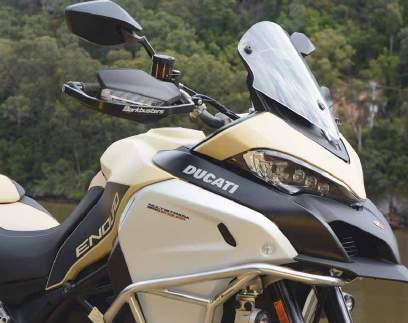
1: A shorter screen and ‘sand’ colour scheme.
2: Thankfully we didn’t put the crash bars to the test. They’re made by Touratech, so they should be good gear.
3: Additional lighting is always welcome.
4: The Termignoni pipe looks good, but we couldn’t honestly tell the difference from the stocker. The bike still has an incredible power output, and the superb electronics make it a pleasure to use.
information on the TFT dashboard.
Okay. A few of those aren’t cosmetic. They’re awesome, though.
One thing fitted to the test bike which won’t come standard is the Barkbusters.
Could Ducati have remembered the little incident we had with the 1200 Enduro?
Riding the Enduro Pro, we admit, isn’t an eye-opener.
After being gifted with most of a year on the 1200 Enduro, the Enduro Pro felt like a favourite pair of jeans on a Saturday morning. The bike is just so damn comfortable. We actually thought this bike may have had ’bar risers fitted, because we couldn’t clearly remember the stock set-up on the long-termer being as good as this one, but we were assured that wasn’t the case.
Performance-wise the Enduro




Multistrada 1200 Enduro
Wherever the adventure takes you, now you can follow it all the way. On any terrain, in any condition, theDucati Multistrada 1200 Enduro is designed to experience the journey with style, performance and technology. The 160 hp Ducati Testastretta DVT engine, 30 litre tank, 19” front wheel, spoked wheels and 200 mm wheel travel.
The Ducati Multistrada 1200 Enduro. We have given it everything, except boundaries.

Pro is the same impossibly awesome weapon as its sister bike. The motor offers huge gobs of tyre-destroying horsepower made manageable at the touch of a button. Touching the button a few more times has the motor calmed down to where it’s an absolute pleasure in heavy traffic, tighter going or across rough ground, and it’s all done in a seamless way that leaves a rider believing its their skill that’s making them ride so fast and smooth.
On the bitumen of course, with the bike allowed to show why it deserves the Ducati badge, it’s just amazing.
The suspension, constantly adjusted in near real time, keeps that rear wheel in touch with ground and driving, even when the bike’s leaned over and even on choppy surfaces. The braking is excellent and the incredible stability of the bike in motion is plainly awesome.
We know we rave about the Multistrada 1200 Enduros, but it’s only because they’re a really special bike.
We have to ’fess up: we didn’t do you, the readers, justice when we were reviewing this bike. We didn’t ride at night to test the auxiliary lighting and we didn’t deck it a couple of times to give the crash bars a workout. We did make an honest attempt to see if we could feel a difference in the motor’s response with the new pipe, but we’d be kidding ourselves if we made any wild claims about ‘testing limits’. We couldn’t honestly say we felt any difference in power delivery. What we did feel was that Ducati had taken a really superb motorcycle and optioned it up with very sensible inclusions which most riders would fit soon after purchase anyway. And maybe Ducati even made it look just a little wilder and gave it just a little attitude.

B IK e spe C s


Web: www.ducati.com.au
Engine: Ducati Testastretta DVT with variable valve timing, L-Twin cylinder, four valves per cylinder, dual spark, liquid-cooled
Capacity: 1198.4cc
Bore x stroke: 106mm x 67.9mm
Compression Ratio: 12.5:1
Power: 152hp@9500rpm
Torque: 128Nm@7500rpm
Fuel injection: Bosch electronic fuel injection system, elliptical throttle bodies with ride-by-wire, equivalent diameter 56mm
Exhaust: Stainless-steel muffler with catalytic converter and two lambda proves, Ducati Performance by Termignoni single titanium muffler
Transmission: Six-speed
Clutch: Light-action, wet, multiplate clutch with hydraulic control. Selfservo action on drive, slipper action on over-run
Final Drive: Chain. 15-tooth front sprocket. 43-tooth rear sprocket
Frame: Tubular steel trellis
Front Suspension: Sachs fully adjustable 48mm USD fork. Electronic compression and rebound damping adjustment with Ducati Skyhook Suspension (DSS)
Rear Suspension: Fully adjustable Sachs unit. Electronic compression and rebound damping adjustment. Electronic spring preload adjustment with DSS Evo. Aluminium double-sided swingarm.
Front Brake: Dual 320mm semi-floating discs, radially mounted monoblocco Brembo four-piston callipers with cornering ABS as standard equipment
Rear Brake: 265mm disc, two-piston floating calliper with cornering ABS as standard equipment
Front Wheel: Tubeless spoked wheel in light alloy, 3.00 inches x 19 inches
Rear Wheel: Tubeless spoked wheel in light alloy, 4.50 inches x 17 inches
Seat Height: 87mm (890mm – 850mm with optional seats)
Wheelbase: 1594mm
Fuel Capacity: 30 litres
Dry weight: 232kg
Standard equipment: Vehicle Hold Control (VHC), Riding Modes, Power Modes, Ride by Wire (RbW), Ducati Safety Pack (Bosch Cornering ABS + DTC), Ducati Skyhook Suspension (DSS) Evo, Ducati Wheelie Control (DWC), Cruise control, Full LED headlamp with Ducati Cornering Lights, Hands-Free, Backlit handlebar switches, Ducati Multimedia System (DMS), Full-colour TFT display, Ducati Performance by Touratech side tank protectors, Ducati Performance by Termignoni single titanium muffler, LED additional lights, low windscreen, Steering damper, Anti-theft ready.





Suzuki Australia decided to head to the 2017 southern Congregation at Dargo in Victoria. It was the kind of riding dualsport riders dream about.



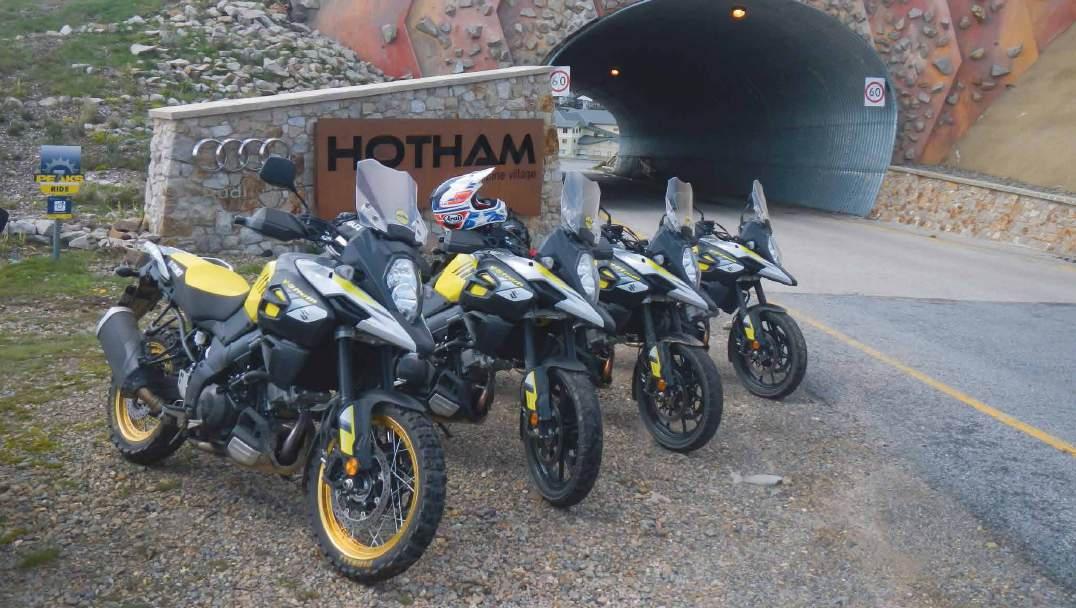
Suzuki’s V-Stroms don’t get anything like the recognition they deserve in the adventure market in Australia. Both the 650 and 1000 are far more capable off-road than a first glance would have you believe, and while they may not compete with a GSX-R in out-and-out performance, they pack enough of a sporty punch to make late braking on tight mountain roads a whole heap of fun.
That’s the key to V-Stroms. They’re not high-performance in any area, but damn! They’re a lot of fun no matter what you ask them to do.
To give the lie to that thought, two of the riders in the bunch were Shawn Giles and Josh Waters. The pair have six Australian Superbike titles between them, and despite neither looking like they were putting in much effort, the winding, high-country roads around Mount Baw Baw and Mount Hotham in Victoria seemed to straighten out effortlessly beneath them. Which isn’t to say the rest of the Suzuki team didn’t keep up…they just didn’t look like it was effortless. They kind of looked like a herd of weasels on crystal meth.


Still, the pack stayed together and there’s no possible doubt about the good time everyone was having, whether it was dragging bikes from

the scrub on the Dargo High Plains Road after overshooting a corner on the slippery gravel or blasting through the ghost gums of Hotham. The V-Stroms made all of it feel fantastic and the riders seemed to enjoy it to the max.
Suzuki owners had been invited via the Suzuki dealership network, so the field
Top: A run up to Mount Hotham in the Summer is a run made for V-Stroms.
Above: Suzuki Australia’s Max Kurth was a top-notch support man. He drove the van, fuelled bikes, made sure everyone had water and generally put the gloss on a high-polish turnout.
Insert: Fingers crossed for a 2018 version.
Left: Suzuki’s Marketing Manager Motorcycles, Lewis Croft, organised a sensational weekend.


























included a few DR650s. Melbourne’s Ty Johnston couldn’t make the ride, but he showed up at the Ringwood start on his very juicy DR800 BIG to wave everyone away. The bike earned plenty of admiring looks.
There was also a very flash-looking DR650SE which looked ready to take on the world, and it turned out to belong to Murray Tainton, a very familiar name to Australian enduro riders. Murray was recovering from a broken leg and wanted a settling-in ride.
The Suzuki folks themselves were on sexy yellow V-Stroms, 1000s and 650s, and despite a bit of a hiccup with the corner-man system leaving Melbourne itself, the day got off to a roaring start.
It’s not easy to describe the Victorian high country to someone who hasn’t ridden there. The roads twist and turn, the scenery becomes more and more spectacular the further and higher they climb, and on a sunny day the air seems impossibly clear. The air is so clear that through the windscreen of a V-Strom a rider can see the future – and it’s full of tyres scuffed right over to the edges, excellent food and coffee, excitement on gravel roads and sunsets to break the heart of an ATO auditor.
Lunch was at the historic goldmining village of Walhalla, and even a brief storm in the afternoon couldn’t wipe the smiles off the riders sheltered under shop awnings of Boisdale halfway through the afternoon.
The riding was just that enjoyable.
By the time the V-Stroms and DRs were parked outside the Dargo River Inn the Adventure Rider Magazine Southern Congregation had all but wound up for the day. Miles Davis had done his skills demo, the Maschine route had been ridden and given a universal thumbs up by those who’d been for a lap, the Bumot stand had blown everyone away with the quality of its product and there were




cold beverages being consumed in the bar of the inn itself. The only remaining official proceeding was the awarding of prizes, which Andy Strapz himself – in attendance on his own DR-Z – handled like an absolute pro.
Following the prize presentations, Suzuki’s Lewis Croft had Shawn Giles and Josh Waters talk through their thoughts on adventure riding after life in the world’s fastest fast lane, and everyone settled down to consume huge chicken parmies and other delicacies from the Dargo River Inn menu.
It may not have been as awesome as the riding, but for a Saturday evening away from home it was pretty damn good!
Again, please?
Sunday morning at Dargo was just as good, with the fog filling the valley and the sun outlining the surrounding hills making a postcard presentation of the venue. The Suzukis purred into life and the diminished crew – a few went their own way and a few had decided to hang around in Dargo for a while – headed for the Dargo High Plains Road, Mount Hotham, Bright, and then, because the day was getting away, onto the freeway for the run back into Melbourne.

On the freeway, of course, the V-Stroms settled into an effortless, smooth rhythm which allowed riders to relax and reel off a couple of hundred kilometres or so in stress-free comfort… except for being caught behind a truckload of pigs for a while. That all got a bit smelly.
At the end of the two days it was a bunch of very happy riders who’d enjoyed a really first class ride. A couple of bikes
had been dropped, but no-one was hurt and that’s all part of riding. Opportunities to enjoy great food and have a few laughs had been enjoyed to max, and, best of all, the riding had been absolutely blue-ribbon.
The Suzuki people are talking about repeating the same run next year, and if they do, and if Adventure Rider Magazine can possibly swing it, we’ll be there.
Guaranteed.
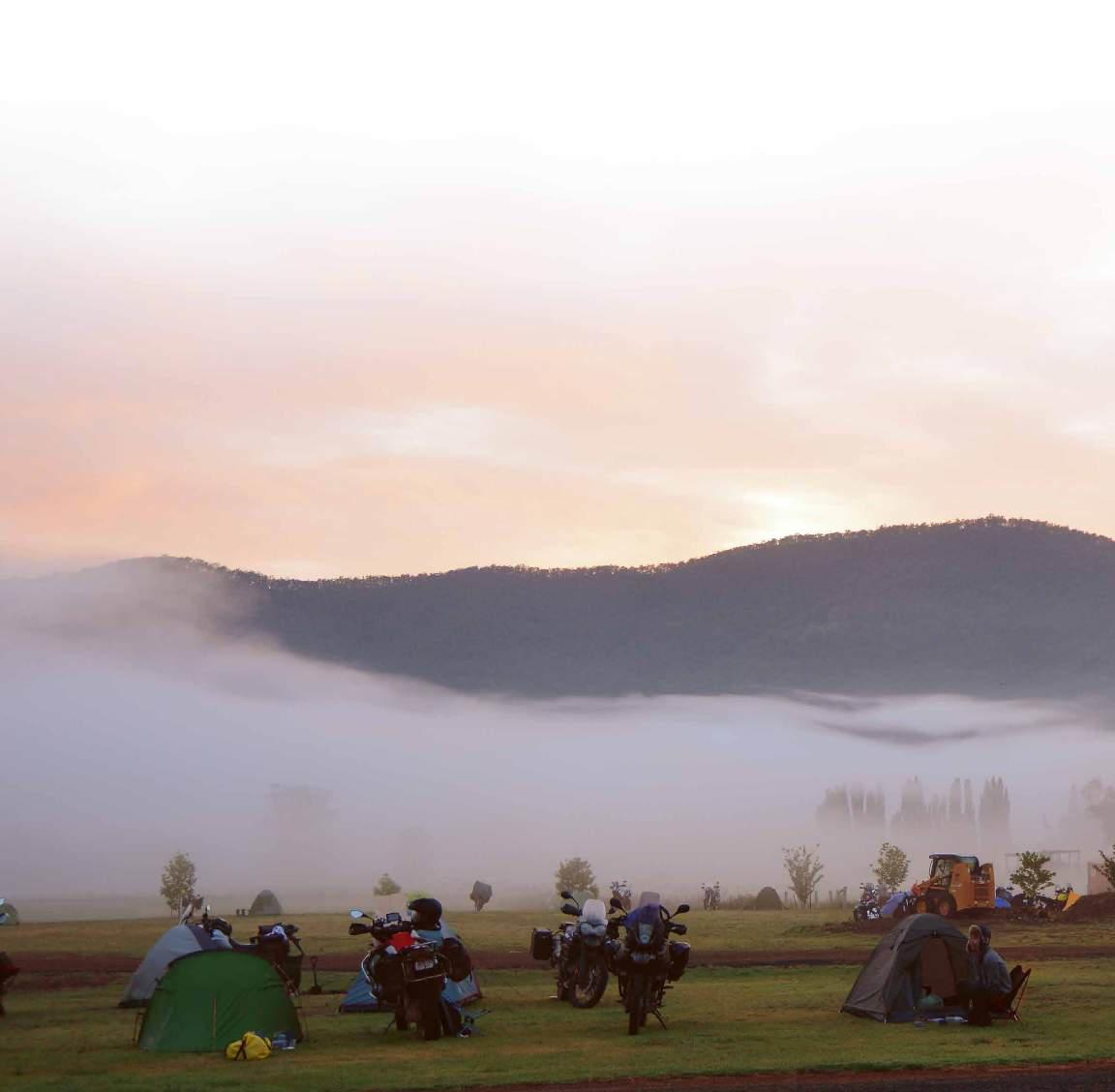







The Perth Adventure Riders seem to have more fun than any group has a right to. In 2017 they headed to Asia and continued the tradition. Colin Bayman was there and has a story or two.

Vietnam was the chosen destination for the Perth Adventure Riders overseas getaway in 2017.
With an abundance of tours on offer, and a huge selection of different styles of bikes, it was really necessary to do the homework to make sure we got the experience we were after. A dozen riders came along, and it was honestly a great group size for this type of tour.
Active Travel Asia was the chosen tour company after offering a
well-priced tour, a range of Japanese dirt bikes and a great combination of road and dirt with a nice balance of sightseeing opportunities. We provided a list of requirements and they came up with the goods. Singapore Airlines delivered everyone safely into Hanoi after a short stopover in Changi, and our transport was waiting patiently at the airport holding up our ‘Perth Adventure Riders’ sign when we arrived.
After a couple of days exploring Hanoi we were picked up from the

Essence Hotel and trucked 20km out of the city to kick off the ride. Our tour leader, Jackie, said a large group like ours would simply not be able to stay together in the hectic city traffic. I reckon he was right, and easing us into the confusion of vehicles, animals and riding on the righthand-side of the road needed a number of behavioural changes.
With boots on and bikes fuelled we were off for the ride of our lives.
We used our own cornerman system with the tour leader up front, their mechanic riding sweep and a truck carrying a spare bike and a minivan following in case anyone needed a break. The tour leader said he hadn’t used this system before and would now make it standard on all his rides.
Above: Choosing trail bikes for Vietnam was a good decision.
Left: A dozen riders made a goodsized group.






We also introduced the Fairy Wings award, where anyone who did anything precious enough had the pleasure of displaying the wings for all to see. They were shared around over the course of the tour with nearly everyone having the privilege at some time.
It really didn’t take long to settle into Vietnam’s traffic. It’s definitely not aggressive, and is probably best described as ‘organised chaos’. We were soon on the gas, traversing country roads, and learning how to pass
both sides of slower vehicles while dodging cows, dogs, water buffalo, chooks, ducks and eight-year-olds on the family step-throughs. After a few close encounters and heart-stopping moments we realised that no matter how carefully we rode, something was going to try and take us out.
Fortunately we all survived, with the exception of a couple of silly, low-speed step offs and only one minor injury for a social worker who apparently was heard saying it wasn’t his fault. The lawyer was constantly asking dumb questions, the truck driver rode into a paddy field, the


Left: Ah, the tranquillity!
Above: A few close encounters and heartstopping moments.
Below left: The XRs did a mighty job, but the boys on the DRZs had the upper hand.
sparky rode like a mad man and the banker took control of the group’s fuel money. Everyone got to be known for something, and after 10 days together a lot of new friendships were formed and memories made.
In no time we started gaining altitude, heading north into the mountains with winding roads that went forever and offered views of valleys, mountain peaks and rock formations only seen in this part of the world. Around each corner was a new obstacle, a different road surface and another 300m drop to possible death. It was hard to keep your eyes on the road with so many surprises and so much to see.
With a number of well-planned photo opportunities, an awesome lunch at a local restaurant and 180km on the clock we arrived at our quaint homestay. The place was completely made of wood, and with a mattress on the floor, clean bedding, pedestal fan and mosquito net we quickly got out of our riding gear and settled in for a number of cold Hanoi beers.
Drinks and dinner were served on an open verandah overlooking lush jungle and dwarfed by surrounding hills.
Ah, the tranquillity!
Each day provided a new surprise, with roads changing from good to

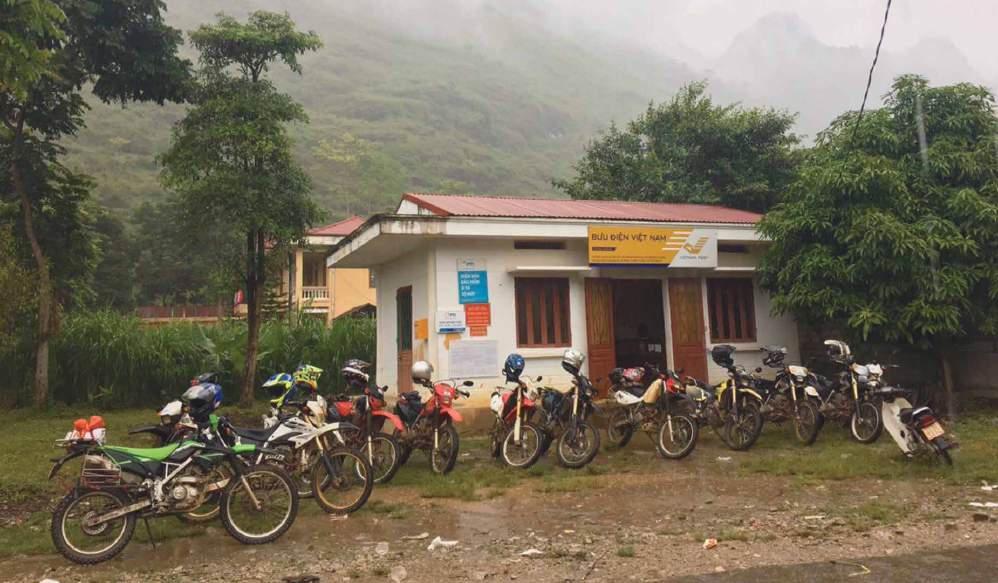
something I’m sure resembled The Road Of Bones. Choosing trail bikes certainly seemed a good decision as the week went on. The XRs did a mighty job, but the boys on the DRZs certainly had the upper hand, launching front wheels in the air and riding over the rough bits like desert racers.
The scenery changed constantly, as did the roads. Over six days we made our way across the northern part of Vietnam, often close to the Chinese border, ending up in Sa Pa.
The trip back to Hanoi was supposed to
be an overnight train ride, but a typhoon causing landslides closed the rail line and killed great number of people. The tour company organised a private bus, and that gave us an extra day in Sa Pa and the opportunity to ascend to 3400m in a fantastic cable car.
For less than $1000 in Vietnam you can have six days on the bikes, accommodation, most meals, tour leader, sweep and support vehicle carrying your gear and spare bike.

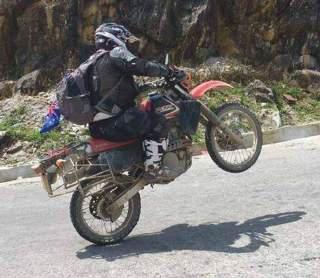
Top: A quick stop at a local post office.
Left: A typhoon caused landslides.
Above: No matter how carefully we rode, something was going to try and take us out.
You do have to pay for your fuel, which worked out to be about $10 a day, and your beer at $1.50 a go. They even throw in the return train ride – providing a landslide hasn’t taken out the tracks.
On a tour like this one you’ll meet some beautiful people, see some amazing sites and possibly have the best week you’ve ever had on two wheels. There’s an issue with licenses, though. You’ll need to look into it and decide if riding without one is a risk you’re willing to take. Insurance could also prove to be a problem if involved in an accident which results in a medical emergency. Don’t dismiss this and think a few dollars in an Asian country will fix anything.
Do your homework and consider the worse-case scenarios.





VARIOUS LEVELS OF ADJUSTABILITY
CHOICE OF LINEAR OR PROGRESSIVE SPRING
OPTIONAL LENGTH ADJUSTER +/- 2,5MM (BOTH FRONT AND REAR)
OPTIONAL HYDRAULIC PRELOAD ADJUSTER (REAR ONLY)
5 YEAR WARRANTY
100% SERVICEABLE
DESIGNED, ENGINEERED & ASSEMBLED IN THE NETHERLANDS TO ENSURE A HIGH QUALITY SUSPENSION PRODUCT.

Elliot Underwood packed too much camping gear, too many tools, not enough hygiene products (just a toothbrush, actually) and headed north from Perth.

Above: The author quit his job, sold everything and started riding. As far as we know, he’s still riding.
Right: Camp was in a farmer’s field behind a stand of trees.
Below:
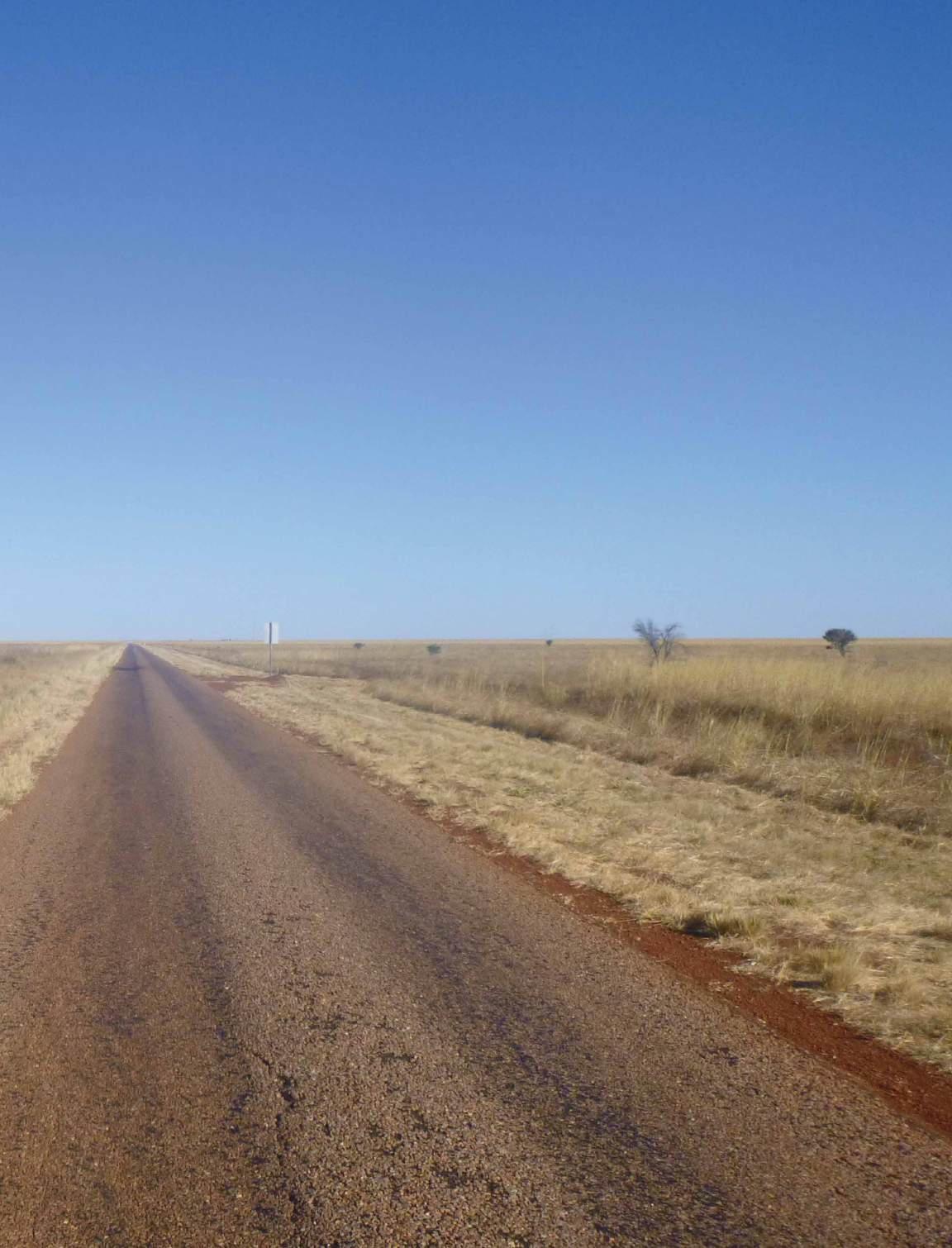
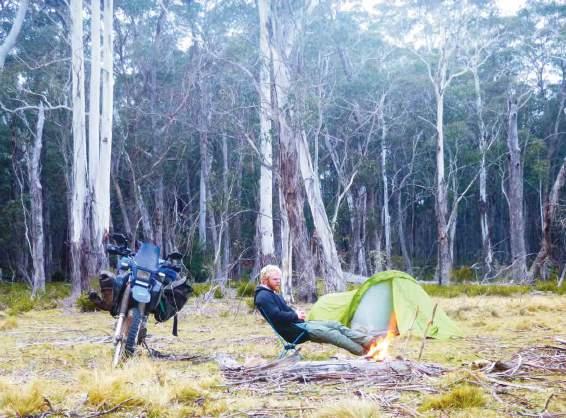
Itravel without a plan on purpose.
I have a vague idea of what’s in the area and there are bits and pieces I want to see, but I never know where I’m going until the bike fires up and starts moving. I’d love to have a GPS and simply follow waypoints, but that wasn’t the point of this exercise. The point was to reclaim my time.
I quit my job, sold everything and started riding.
The steed of choice was a black DR650, the starting point was Perth and the destination was unknown. Riding out your driveway is an odd experience when you know you won’t be back for a long time. It’s even odder to think that when you do get back, you won’t be the same.
Leaving Perth was an all-day riding affair to make Geraldton.
Finding camp for the first night is always an exercise of impossible optimism being steadily reduced to the point of looking at a potential site and thinking, “Fine, then.” Local advice steered me towards a creek about 25km north of Northhampton, and after negotiating deep sand at the end of the track, the bike went down. Much heaving brought the 220kg lump shiny-side up, only to have another lie down further along on what turned out to be a sandy hill climb. I’d spotted a small, unfenced field on the way to the track and returned to check it out. With drastically lowered standards, I set up camp in a farmer’s field behind a stand of trees.

Horn
The next day’s ride was a rolling landscape of gorges through the Kalbarri National Park, still tracking north along the coast.
A distant fire gave the early morning sun an orange tinge and the landscape took on a hellish appearance. The weather grew hotter as I flew through the bush until Denham and, caring little for the well-worn path, backtracked to Hamelin Station to stay the night. Paying money –even a small sum – for a camp irked, and at that early point in the trip the comfort of a hot shower and barbeque was lost on me.
The bike sung until I hit Canarvon and, having little reason to stay, kept riding.
About 50km from the nearest roadhouse I looked down and saw oil all over the engine and my boot. Inspecting the damage confirmed the oil leak was coming from a rear line connecting the head, crankcase and gearbox. There was still oil in the sump but the level was low and I got on the UHF to try and signal a passing motorist. After a few failed
Above: The steed of choice was a black DR650, the starting point was Perth and the destination was unknown.
Below: A five-day wait for spares.
Right: Getting away from city traffic was a relief.

attempts, I managed to get hold of a couple of litres of diesel oil for $10. I rode off, checking the level regularly, and decided the leak wasn’t big enough to halt progress at the roadhouse. I bought a few litres of oil and made for Fortescue River, about 120km away.
After 80km, topping up at intervals, I eventually put in at a roadside parking bay frequented by caravaners, but between the van-load of backpackers who decided to set up right next to me and the road trains passing less than 40m from my tent at all hours, some finding it necessary to keep their horns blaring the whole time they passed the camp, I didn’t sleep well.
I was off before dawn.
The ride through the valley into Fortescue River Roadhouse from the south is one not to be missed. Once through a pass, red outcrops of stone stretching up to the heavens flank a plain of immense reach and it’s hard not to feel dwarfed by the expanse of nothingness. Karatha and Port Headland flew by

with a short stop to call the Broome motorcycle shop and order ahead for a new oil line.
I continued on through stunning landscapes and was soon passing along the northwest of the Great Sandy Desert where my only companions were stray cattle and friendly truckies. As the twilight descended I settled into a concealed bush camp.
I awoke with a start as a howl issued a few metres behind my head. I sat up and found a dingo standing at attention. I shooed him off but he kept howling, and as I packed I heard more howling returns from the opposite side of camp.
I hit the road and didn’t stop until Broome, where I found a caravan park a few kilometres from town. The place was surrounded by bush and, with a five-day wait for the bike spares to arrive, I sat most afternoons watching the wallabies feed, the young ones poking out of their pouches to look
around while robins perched on the mothers’ backs.
Broome was an interesting place, but I couldn’t imagine staying there for months on end as a lot of backpackers do. The racial tension combined with the heat and mozzies made it far from comfortable. Still, it has its charm.
By the time the spares showed up I was well and truly ready to move on. I hit the road and didn’t stop until Derby, where I fuelled up and continued on towards the start of the Gibb River Road.
The first 100km or so of the Gibb River Road was well-paved with brief patches of red dirt, eventually becoming gravel with light corrugations. The grassy wetlands morphed into light, undulating hills and eventually became the King Leopold Ranges whose splendour is difficult to describe.
Belly full and bike loaded, I turned the music up and sped away from the Mount Barnett roadhouse, ready for another day of great bush riding and spectacular scenery. Less than a kilometre down the track I rode into the Barnett River without a second thought and it came as a bit of a shock when the river was almost as deep as the bike itself. Pulling up afterwards I
opened the drain on the airbox and was greeted with a stream of water that poured out for several seconds. The bike kept running and I was mightily impressed by that.
Crossing the Barnett signalled the start of a slew of deep crossings that had me repeatedly draining the airbox, but nothing prepared me for the King Edward River.
I could see the start of the crossing was about 60cm deep with big boulders scattered around and the current was strong. I plunged in. I could see the rocks about a metre in front of the bike, but the river got much deeper in the middle and the force of the current pushed me downstream hard. I lost my balance, dabbed a foot to stay upright and was rewarded with a boot full of water.
Once across the bike died. When I started it again it produced an alarming amount of pops and crackles, but I took the plug out of the airbox and it soldiered on.
The next day started with a 76km ride to Mitchell Falls over a very corrugated bush track. With boundless energy u
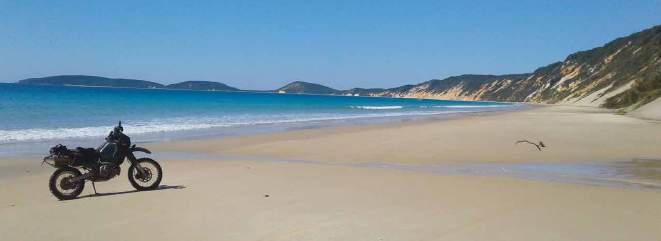


on my side from the cooked meal and beers given to me by a very kind couple in camp the previous night I flew along as the track became similar to the tracks around the Perth hills. It was the type of terrain I was used to and I was at the falls walking track in no time – apart from a small stack on the only slippery clay patch of the whole section.
The walk to the falls was 8.6km and the trail wound through mangroves, past ancient rock art, along the edges of waterfalls and eventually crossed a river to offer a breathtaking view of Mitchell Falls.
Spent from the walk and dirt ride in, I slowed down on the way out to check the previous crash site and promptly stacked it again. The wet clay caught me both times.
Maintenance time
Breakfast the next morning was at the Drysdale Station. I sat, eating a baconand-egg roll, looking at the bike in silent wonder at how it managed to keep plodding along. It was in a rough state by this stage. The air filter was probably soaking and filthy, the chain had stretched and was hanging loose, the left Barkbuster was in a pannier after falling off in one of the crashes and the whole bike was covered in red dirt.
In short, I was impressed it was still running.
The Pentecost River gave little trouble, although I was getting used to wet feet. I blasted through to Kunanurra and onwards to Lake Argyle where I managed to give the bike an oil change and order some parts to Katherine.
The next morning I headed south through the Bungle Bungles and onwards to Whipsnake Gully before packing up and leaving for the Keep River National Park in the Northern Territory – a stunning place to bed down for the night and with no ban on fires, just signs reminding
people to be responsible.
In Katherine I managed to get a new set of hand guards, a fresh clutch lever and decided to hit up the local machine shop for a license-plate reinforcement (it was cracking around the mounts) and a new mount for the snapped light bar.
While I sat around waiting I decided to camp at Katherine Gorge National Park for the night, a mere 20km out of town.
With the repairs done I sped away towards Mataranka and turned east to find myself at Roper Bar, about to enter the Limmen National Park.
What a place!
Flogging along at 90kph through twisting gravel roads and the occasional creek crossing, it was easily the most enjoyable riding of the trip so far.
On two of the crossings I saw my first crocodiles. They were only small freshies, but crocs nonetheless!
Butterfly Springs was paradise. A serene pond full of lilies and blooming purple flowers, butterflies everywhere and a little waterfall added to the ambiance –and not a soul around. I swam and sat
there reading on the edge of the pond for a while before moving on and walking the track around the Lost Cities, a collection of rock pillars leftover from ages of weathering. The only other person I’d seen in the park so far had mentioned Lorella Springs so I headed there for the night. The signs on approach promised cold beers and food so I was sold.
Entering the homestead, I was surprised to find their plot of land had so much on it. I was encouraged to check out the hot springs, emerald-green swimming holes and swamps full of flying foxes, so with a cooler bag full of beers I rode towards Nudie Hot Springs along tracks of soft sand.
To my dismay, there were no German backpackers at the destination and the name is just that: a name. It was a pleasant soak though, and a lovely couple offered me dinner while another camper provided additional beer as an apology for his running a generator about 30m away. Needless to say, I slept well and it was nice to wake up and swim in the hot pools at dawn. u



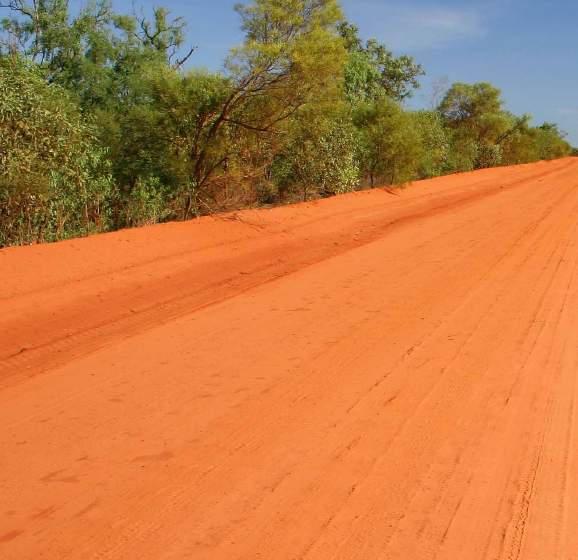





Onwards I rode through the final stretch of park, a roller coaster of soft sand, river crossings and hard tracks. There’s nothing like flying along at 100kph and trying not to pop the tyres as sharp bedrock rises up from the track, all the while dodging stray cattle and keeping the bike steady through the tankslappers. In short, it was magnificent, adrenalinefuelled riding.
I popped out at Cape Crawford and decided to head south along the highway to Mount Isa where I’d lined up a new rear tyre. From Isa I backtracked to Lawn Hill National Park, and it was an odd experience to ride through hundreds
of kilometres of scrub and suddenly emerge at a gorge full of life.
Lawn Hill is a permanent water source of emerald hue which houses a healthy population of freshwater crocs and snapping turtles. I spent a couple of contented days swimming under waterfalls, walking the tracks through the park and enjoying the aboriginal artwork in the area.
Onwards through Georgetown I rode, and over the next 200km the terrain changed dramatically. By the time I made Ravenshoe I was shivering and riding into a rainforest.
After a chilly camp I had breakfast in Atherton and rode through the most stunning landscape of intense-green,
Above: Paying money – even a small sum – for a camp irked
Below left: it was an odd experience to ride through hundreds of kilometres of scrub and suddenly emerge at a gorge full of life.
Above right: A fire-cooked pan full of bacon, eggs, mushrooms and tomato.

fog-shrouded hills. The road had turned into a series of sharp bends and switchbacks, and in a small town I saw a group of bikes outside a cafe and decided to stop in.
I was greeted like a celebrity. Everyone wanted to know if I’d been to this park or that spot on the way over. It turned out it was a ride for a club devoted to raising funds for Alzheimer’s research so I was somewhat out of place, but it was nice to chat to fellow bike enthusiasts regardless.
Through a mountain pass down to the lowlands fraught with bends threatening to overheat my struggling brakes and overextend my dirt-biased tyres, I arrived in Cairns.
To say it was a shock to go from seeing a handful of cars, a scattering of buildings and speak to one or two people throughout each day to dodging all of it in incredible numbers is an under-

statement. Cairns is a major city, a veritable maze for someone unaccustomed to its roads. I managed to find a likeable caravan park for a couple of nights in order to get the bike sorted, then moved to a cheap camp at a national park to use as a base while I explored.
As for Cairns, I can say I’ve never before seen such a conglomeration of stunning females. However, as fate is a cruel mistress, I’ve also not seen before a population of males of such statuesque perfection. Bronzed, muscled and wearing the latest fashion, they wander around with supermodels on their arms and ruined any chance I may have had at finding companionship. Where in the bush I was one of the rare men under 60, I was invisible in Cairns’ sea of urban gods.
My brake pedal had been bent so many times it had lost its identity completely, so after ordering a replacement and a fresh set of waterproof riding boots, I pointed the bike north towards Cape Tribulation, on the coast of the Daintree rainforest.
Getting away from the city traffic was a relief. The cars grew more sparse and the sugarcane plantations gave way to the oldest surviving rainforest in the world. It towered above with ancient indifference.
While having a chat to someone at a van park in Cairns, I mentioned I was heading north and was taken aback when his response was, “Yeah, watch your bike up north mate. Those blackfellas got sticky fingers.”
At first I didn’t understand what he meant, but when it dawned on me I was angry for a couple of reasons. First because racism is still rife in Australia, and second there’s enough truth in it for it to continue.
My next move was uncertain. I could go north towards Cooktown or start making my way south. After a night of inebriation and sweat I decided to again seek a cooler climate.
The bike needed some attention, so the next morning was spent cleaning the air filter, installing the new brake pedal, adjusting the front suspension and changing over the front sprocket. I wandered around the Atherton Tablelands for the day, bought a jumper to combat the chill and made for Lake Tinaroo for the night. u








Fresh
I rode to the lake, found some tracks leading off into the bush and set up camp.
The next day I stopped for a coffee at Australia’s oldest coffee plantation and headed towards the delightful little town of Kuranda, supposedly the ‘original’ rainforest markets.
I camped at another spot in the bush just outside town and wandered in for breakfast the next morning. As I picked my way through tie-dyed shirts and beaded necklaces I saw a Wolfmother concert was in town that night. That was an opportunity too good to miss. The concert was awesome.
Riding south the next day had the first rain I’d seen on the trip and I’d posted my waterproofs home way back in Broome, but I was quickly dry once the rain subsided. I continued on through Ingham, past the original Pub With No Beer and ended up weaving my way up through the Paluma Ranges.
After a long day’s riding I settled in for the night at another well-hidden spot out of the way of any likely traffic. It was a cold night’s sleep, but much preferred to writhing around in a pool of sweat. In the morning, I sat in front of a fire with a cup of tea having just polished off a mushroom, smoked-salmon and camembert omelette on toast. Little yellow-breasted birds fluttered through

the undergrowth picking at insects and whistling to their counterparts. The sun was shining through the trees as it made its steady ascent but there was a bite to the breeze thanks to the 850m of elevation. I had nowhere to be so I just sat and enjoyed the symphony that nature so unselfishly offered.
From Paluma I beelined to Townsville and ended up at Ayr for the night after much time spent failing to find a camp on the way. The next day’s destination was Airlie Beach, which showed some national park camping in the Whitsundays.
On arrival I found it was somewhat of a backpacker haven so decided to spend the night in town. As usual, I regretted the decision instantly and my illusions of a night of partying such as I used to do a few years ago were quickly dashed. Instead, I was in bed by 7.00pm, falling asleep to the thumping of the bars and
clubs in the next street. Never again.
In Mackay I fitted a new rear tyre and front sprocket and headed west to Eungella. The whole area is dairy country and beautiful riding through lush pastures with little cottages on the hills. I found a perfect camp right next to a river and settled in for what turned out to be a two-degree night. Luckily I had a roaring fire and sat with tea and a fire-cooked pan full of bacon, eggs, mushrooms and tomato, enjoying the peace of the quiet forest.
Having stopped in town for a coffee and cake, I continued on dirt roads to Nebo. The country was stunning and the weather prefect. Onwards I wound my way through the low hills, zig-zagging along the coast towards Noosa where an aunt of mine lived. Warm greetings made me feel right at home and she
Above: Some much-needed maintenance. Below: The country was stunning and the weather perfect. u



















wasted no time getting me settled in to the spare bedroom. I slept in an actual bed for the first time since leaving Perth.
Hours spent catching up and trading stories saw me stay another night in comfort. It was nice to stop moving for a moment, not have to pack up camp and constantly consider logistics for the next move. I decided to find some work and ended up staying for a few weeks exploring the area.
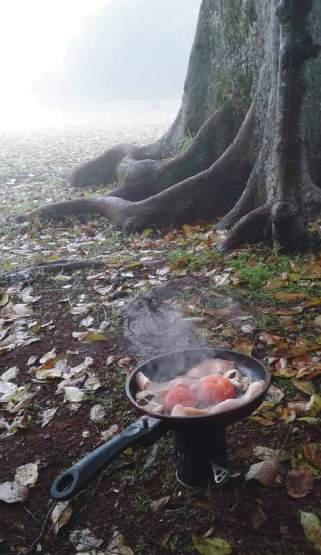
After a very pleasant break I set off southward again and took stock.
I’d been on the road for four months and was just about to roll over the 20,000km mark. There was no magnificent view to accompany the milestone and I found myself with a banging headache sifting through the dense suburbs of Brisbane.
Once away from the maze, I settled into the slow, easy pace of travel again. Down through the Glasshouse Mountains and into the Northern Rivers area of northern NSW where twisty roads are the norm. Coming into Nimbin from the west was an exercise in brake control as every twist in the mountain passes threatened nasty vertical drops. Apart from the cannabis culture, there wasn’t much to the fabled natural retreat of Nimbin and I quickly slabbed it south to Grafton.
Camp was 80km west in the Gibraltar Range at a place called Mulligans Hut. With water on tap, rainforest hikes and a quiet camping ground, I decided to spend a couple of days enjoying the area before moving on.
Arriving at Inverell I saw a bike shop and it wasn’t until I pulled over to check out the tricked-up DR650 out the front I realised it was Vince Strang Motorcycles. DRs were everywhere and I rode with a fellow named Peter to the Adventure Rider Magazine meet up at Green Valley Farm,
roughly 30km southeast of Inverell and through boarded-up Tingha.
We were among the first there and watched the bikes roll in, everything from XT250s to KTM 1290s, but in the end the DR650 was the bike of choice. There were over 80 of them. Saturday night included a few beers, yarns and a prize giveaway which saw me with a free T-shirt and mag subscription for the furthest distance ridden to the event. On top of that, Vince Strang was kind enough to supply a set of Pirelli MT21s in support of my adventure.
A healthy balance of twisty bitumen and graded dirt roads saw me through the New England National Park and at a nice bush camp around 50km east of Armidale. The Dutton River Trout Hatchery was on the way, so a fillet of smoked trout made an excellent dinner.
More glorious riding the next morning led me to Comboyne just southwest of Port Macquarie. With plans to camp in the Tapin Tops National Park, the bike flew along the dirt until we came to a stop at Dingo Flats campsite.
I’m not sure what happened that night, but the next morning I knew I had to get away. The clean, signposted and neatly trimmed site put me in a dark mood and I yearned to be far away from the well-ordered society that spurned it.
And so, with the open road drawing me like a moth to a flame, I turned west and rode.




Irene and Lia continue their journey through Brazil and Argentina, finishing Lia’s part of this story…



Above: Now there’s a caution sign you don’t see every day. Left: Looking a tad slippery.

We had left the sandy roads behind us and on to six-lane highways bound for Rio de Janeiro, São Paulo and Curitiba.
With 10,000km on the odometers we rode into Rio and returned directly to modern-day Brazil. Canoes glided over the glinting water while in the background we saw the jungle-covered mountain with one of the seven world wonders: Cristo de Redentor.
Rio has a lot to offer in sightseeing, culture and nightlife. Of course, we also attended a football match at the Maracanã Stadium, one of the largest in the world, and walked across the famous beaches of Copacabana and Ipanema.
Before we arrived in Rio we’d planned to make a short stop at Arrial do Cabo, a lovely beach town were Rio inhabitants – ‘cariocas’ – go for weekends. Our timing wasn’t too bad since we arrived on a Wednesday, but it was still difficult to find a place to stay. In the end we found a wonderful hotel 20m from the beach which wasn’t too expensive.
Our plan for a short visit was messed up when Lia became ill and we had to prolong our stay by a couple of days. It did allow me to catch up with editing
my photographs and writing stories, and for the first time in over two months of travel I even had time to read a book while lying on the beach. I thought it was strange everyone was lying on chairs instead of on a towel directly on the sand like me, but after 30 minutes I realised why. My body was completely covered in a thin layer of grit which stuck to me because of my sunblock.
I always have to learn the hard way. Lia recovered quickly, so after a couple of days we left for Rio to see what that metropolis had in store for us.
Room with a view
We often made use of our Lonely Planet to find a good, cheap place to sleep. For Rio we had three options as we rode into the enormous city.
It was holiday season in Brazil so it proved difficult to find a place to stay at all. Our first choice had two bunk beds free, but only for one night. We tried our luck via booking.com and hostelworld. com and found a hostel nearby, also in Ipanema. Without taking a look we booked, only too glad to have a place at all.
The next morning I entered our new accommodation and it scared the crap out of me. In the ‘lobby’ were two

completely worn-out couches with dirty blankets on them and there was hardly a place to stand because the whole room was full of rubbish. It wasn’t only not clean, but everything I saw was covered in dust. On top of all that, it smelled horrible.
Oh my god. I thought we were screwed.
The only upside was the landlady. She was a lovely, elderly woman.
Upstairs was a little better, and at least we had a room with a huge window which we immediately opened to let in some very necessary fresh air. We even had a room and bathroom of our own instead of our usual bunkbeds in a shared room with six others. So all-in-all it wasn’t too bad.
Two women were holding hands and walking in the street and two guys were kissing each other on the lips. I actually hadn’t noticed it until Lia pointed it out.
Above: Arrial do Cabo, a lovely beach town were Rio inhabitants – ‘cariocas’ – go for weekends. Below left: A short visit was planned, but an illness meant staying longer than intended.
Below: Men at the army post helped remove the wheel but couldn’t get the tyre back on the rim.










There seemed to be a lot more gay than straight people in Rio. How remarkable. Back in our hostel I checked our Lonely Planet and it wasn’t remarkable at all. We were in ‘the gay capital’ of Latin America. Homosexuality was legal and more accepted there than in any other part of the continent.
The rain didn’t hold us back. We bought umbrellas and in my only pair of jeans and flip-flops we strolled over to an art market, took the subway and walked over the famous Escadaria Selarón stairs, nowadays a beloved tourist attraction. The colorful tiled stairs were the work of Chilean artist Jorge Selarón. He started tiling the stairs in 1990 and was still busy enhancing it until his death in 2013. We did our own walking tour around the city centre and admired the beautiful architecture.
Apparently you have to be lucky with the weather to be able to see the view of Rio de Janeiro from top of the 700m Corovado mountain, site of Cristo de Redentor landmark. We boarded the special train and ascended the mountain, then climbed a few stairs to get to the 635-tonne, 30m-tall statue to find our luck had run out. The view over Rio was blocked by a dense fog, and even Jesus himself was hardly to be seen. But we had time on our side and our patience was rewarded. The fog cleared to reveal the statue. It was huge and impressive, but in my opinion still the least interesting of the seven new world wonders. I’d seen Chichen Itza, the Taj Mahal, the Chinese Wall, the Colosseum and Machu Picchu. All of them were breathtaking in their own way…except for this one.
To be honest, for me this world wonder was kind of a letdown.
The massive Maracanã football stadium is one of the largest in the world with a capacity of almost 80,000. Matches are rated as some of the most exciting in the world, not least because of the enthusiastic fans. For Lia it was the first time in a stadium at all and she could hardly take in all the chanting people and huge, loudly pounding samba drums. We loved watching the devoted fans even more than the match itself. They were dancing in the aisles and we didn’t only hear the deafening roar when a goal was scored, we felt it vibrating through our bodies!
After strolling on the beaches of Copacabana and Ipanema it was time to leave Rio. We enjoyed this marvelous city a lot, but like always, we loved riding our KTMs even more.
We continued along the coast to São Paulo. This part of the BR101 highway
had one of the most impressive, winding coastlines, and towns like Parati, Ubatuba and Sebastião alongside it have become resorts for the well-off cariocas and paulistanos (inhabitants of São Paulo).
In Rio we’d faced a lot of rain and were very disappointed to see the bad weather continue, especially while riding this beautiful part of the country. It was impossible to take pictures so there was nothing to do but continue on to São Paulo.
The disadvantage of Brazil was that the roads were generally too good.
The asphalt was perfect and you paid a toll to use it. Six-lane highways aren’t the best riding on the KTMs, but they’re the fastest. Still, even the highway section to São Paulo was overwhelmingly beautiful. Like a hard-to-see line of ants we rode over high bridges and through countless tunnels in the gigantic, forested mountains.
Endless skyscrapers formed the new view as we rode into São Paulo. With 22 million people, the metropolis alone exceeded the population of The Netherlands. It reminded us of New York.
Our first stop was at a KTM dealership where the bikes had their 10,000km service. A mechanic asked if we’d already replaced our brake pads because they looked hardly used. I replied, “No. We just never brake!”.
The next day we visited some museums and walked through a city park which looked like the jungle version of Central Park.
Curitiba was a completely different story. It’s also called the ‘Rock City’ of
Left: An outstanding view from a helicopter. Below: We did our own walking tour around the city centre. u
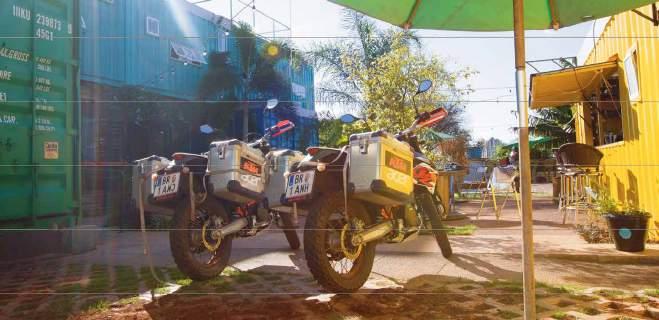








The KTMs could take you to any place you want at any time.

Brazil, and it was obvious why. There so many tattoos, beards, piercings and band shirts. If you ever visit Curitiba, go to the exceptional Oscar Niemeyer museum. It’s an incredible, special building with a varied art collection.
Before crossing the border at natural world wonder Foz do Iguaçu, I was keen to go to Serro do Rio do Rastro. It was reputed to be one of the most beautiful mountain roads in the world.
The window of our hotel was fully packed with stickers from motorcycle clubs. It showed how beloved this mountain pass was and made me even more enthusiastic.
Fortunately we started without rain, unlike the previous few days. But suddenly the whole mountain crest disappeared in a dense fog, just when I was ready to photograph Lia in a nice bend. After waiting for an hour, I gave up and we continued on. As soon as we left the mountain pass the sun gently emerged and the veil of fog gradually opened up. We turned around and went back, and, after waiting a little longer,
the fog disappeared completely.
What luck! Lia rode up and down several times for the camera, and after that, we continued to enjoy the beautiful road through ‘snow valley’, a welcome change after days of mainly tarmac on busy highways.
We headed to Foz do Iguaçu, which lay partly in Brazil and partly in Argentina.
The fastest way to get to the Brazilian section was via Argentina, so we decided to score some additional stamps for our passports. How typical. Every time you crossed a border you immediately noticed the difference in the roads, nature and population. This transition meant you got exactly the opposite of what you expected.
As soon as we entered Argentina the asphalt became significantly worse. There was hardly any other traffic on the road and cars we did see were rusty, rickety wrecks.
By 5:00pm we had about 100km to go. According to the GPS we were due to arrive at 6:15pm. Suddenly, however, the gray asphalt turned into red sand with
pebbles and stones. It was undeniably idyllic, untouched greenery, but my first thought was that it would be an awful place to get a flat tyre. I passed an army post and felt relieved the off-road part in Argentina was behind us. But where was Lia? She had been not that far behind me, but now was nowhere to be seen.
I waited a little longer before heading back. I soon found her and, unbelievable! She had a puncture.
At the army post, four men helped us remove the wheel and replace the tube. It was easier said than done, because they couldn’t get the tyre back on the wheel.
In the end, we decided to go to a gomeria (tyre repairer) with only the wheel. In the pitch dark the tyre was repaired, the wheel replaced, and we covered the final 32km to Foz do Iguaçu, arriving at 12:30am. It was six-and-half hours later than planned.
The next morning we caught a bus to the border where more than 220 waterfalls made an incredible display of natural violence.
Having admired the falls from the

In Curitiba something drew my attention: the poor people from the slums who collect high stacks of waste in large carts in the city centre.
They’re men and women, young and old, and I see them as ‘the heroes of the street’. Instead of stealing or robbing like some, they work extremely hard for very little money. They’re people like Amauri. At 22, he has been doing this work all his life. He works six days each week from morning until evening and his full cart weighs about 80kg. For one kilo of paper he’s paid eight cents. For one kilo of plastic 10 cents, and for one kilo of aluminum 80 cents.
I decided to give the people who helped me do a report a small amount of money as a token of my gratitude from our Projects Of The Riding Reporters Foundation. I gave each of them 50 reales, which amounts to $15. It’s a pittance in the Netherlands, but in Brazil it is worth much more. I loved 49-year-old Jocélie Riviera’s reaction. Initially she didn’t want to accept the money, but in the end she did and was very grateful. I’m touched that nowadays you can still make people happy with such a small amount of money.
It was made possible by the Postcode Loterij Fonds of Free Press Unlimited.
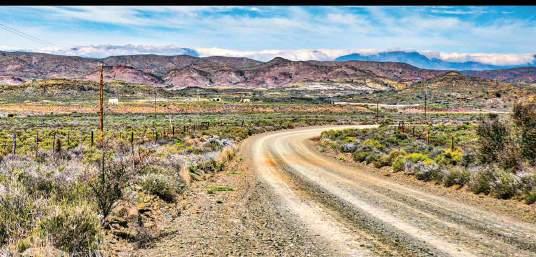




» Inflate a low or flat tyre quickly and safely.
» Ideal for use on motorcycles, ATV’s & scooters.






The Mini Jump Starter will start your bike no problem at all, in fact it will start anything up to 3 litre V6 petrol car engine! The unit has short circuit protection, overcharge protection & discharge protection. It includes a USB charging port and a 4 in 1 cable which will charge a myriad of different electronic devices. It also has an LED flash light with 3 illumination modes steady, strobe or SOS. All packed in a sturdy carry case.
Brazil is the largest country in both South America and Latin America.
As the world’s fifth-largest country by both area and population, it’s the largest country to have Portuguese as an official language and the only one in the Americas.
Bounded by the Atlantic Ocean on the east, Brazil has a coastline of 7500km. It borders all other South American countries except Ecuador and Chile and covers 47.3 per cent of the continent’s land area. Its Amazon River basin includes a vast tropical forest and is home to diverse wildlife, a variety of ecological systems, and extensive natural resources spanning numerous protected habitats. This unique environmental heritage makes Brazil one of 17 megadiverse countries, and is the subject of significant global interest and debate regarding deforestation and environmental protection. In the Amazon forest there are still undiscovered indigenous tribes. Portugal claimed Brazil as a colony to its empire in 1500, but nowadays Brazil is an independent republic with the world’s eighth-largest economy.
Only a few of the more than 4000 airports in Brazil provide international flights.
São Paulo and Rio de Janeiro are the main two, but Belo Horizonte, Brasília, Recife, Natal, and Fortaleza are also possibilities. Of course, you can also opt to enter overland via a bordering country.
Overnight lodgings and food are readily available along the route, including both privately owned and national chains. You can lodge at hotels at the numerous fuel stations.
Brazil has 1,751,868km of roads, 96,353km of them paved. That means that only 5.5 per cent of the roads are sealed. Nonetheless you can often choose paved roads, including excellent six-lane highways, to get to your destination. You have to pay toll for highways in some parts of Brazil, like in Rio de Janeiro for example.

Brazilian side, we decided to also see it from above with a helicopter flight. It was an outstanding view which passed too quickly in the 10-minute flight. We saved the Argentinian side for the next day, which started with a one-hour wait for a bus. How quickly you get used to the luxury of the KTMs that take you to any place you want at any time.
The Argentinian side of the waterfalls was amazing in a completely different way. We wanted to see, feel and experience them in addition to the overwhelming view from above.
Our wish was granted. The waterfalls splattered over us and left us with thoroughly soaked clothes.
We only stayed a single day in Argentina before crossing the border to Uruguay.
After three days we arrived in Montevideo, where the next project was waiting for us: a report about a special prison. In addition, this was also the place where the fantastic part of the trip with Lia came to an end and the second part of the great adventure with Carli would begin!
Above: Serro do Rio do Rastro, reputed to be one of the most beautiful mountain roads in the world. Below: Lia rode up and down several times for the camera.



Some good improvements to an already great bike.


Kawasaki’s go-anywhere, do-anything adventure workhorse can even be a catwalk model…sort of.
ack in issue #11 we ran Motorrad Garage’s KLR650 in Fit Out. We’re a bit keen on KLRs here at Adventure Rider Magazine so when we headed to the first-ever western Congregation and Motorrad Garage offered to loan us one of its own bikes, it was the KLR we asked for.
B“No problem!” came the cry down the phone, and before we knew it we were sitting astride the 2008 Kawasaki, the harsh tone of the Staintune pipe promising a lift in horsepower and improved throttle response, our lip balm and face moisturiser stowed in the tank bag and the tall screen offering all the protection we could ever hope for.
We looked at the HP2 lead bike and thought the comfort wasn’t going to matter all that much. If the KLR could keep up, that’d be good enough for us.
The bike itself was bought second-hand, and, like so many KLRs who’ve been through a couple of owners, Motorrad

’peg on an off-roader! Hilarious!
But then, trying to amuse other riders, we folded the ’peg down and rode for a while, pointing at it.
The more we rode, the more we realised how comfortable the damn thing was. We really wished the lefthander had been there.
So that was a bit of a revelation.
Naturally, any bike from Motorrad Garage is going to carry some good luggage. We’re big fans of the SW Motech gear, and the tankbag and panniers on this KLR were first class. The pannier racks fitted nicely and the hard panniers – which we didn’t use on this trip – clipped into
place and locked solid in no time.
There was also a funny little SW Motech dry bag attached to the right-hand side crash bar. We thought it looked a little vulnerable, but when we put the crash bars to the test it came up looking like new. For the distance guys, living off the bike, it’d add some real capacity and convenience to the luggage rig.
The curious thing about that bag was that it seemed to snug in really close. It was an eight-litre unit and designed to be strapped to the tank rack or just about anywhere. It was attached to the outside of the crash bar, but it didn’t seem to stick out at all.
Of course the SW Motech crash bars were brilliant, and, as we said, we gave them a workout. We managed to scratch them a little, but between the pannier racks and crash bars that bike seems almost armour-plated – thank goodness –and despite our rough treatment the bike finished the ride in excellent condition.
The footpegs with the rubber inserts made things interesting when there was any water around but were comfortable otherwise, and an SW Motech centrestand was fantastic. There was even a grab handle on the left-hand side pillion-’peg mount. Swinging the bike up on to the centrestand was easy-peasy.
This was a very interesting KLR. It seemed to us the best features of the bike had been preserved – it was reliable, comfortable and easy to ride – but some improvements had polished those great features without sacrificing any of them. With the Motorrad Garage fittings it was still reliable, but even more comfortable and even easier to ride and live with.
But you all want to know…did it hold its own with the HP2?
No-one got lost and both bikes ended up at the destination on the same day, so that must mean it did, eh?

1: A tankbag can’t be beaten for convenience. The capacity of this one was spot on.
2: SW Motech crash bars and pannier racks were tough and kept the bike well protected.
3: A drybag on the crashbar was a very snug fit. 4: A grab handle made it easy to roll the bike onto the centrestand.






In recent issues we’ve had a look at a few aspects of tyre repair. We’ve stepped through plugging a tubeless tyre and we’ve laid out the process of repairing a tubed tyre. Last issue we looked at bead breakers. Now here’s a quick look at a very serious and challenging part of the procedure for adventure riders – getting the tyre back on.
Amid all the drama facing a rider doing a tyre repair, getting the tyre back in place isn’t usually considered a big deal. But now rear wheels and tyres need to cope with in excess of 100 horsepower on rough terrain and tyres and wheels are being constructed so the two stick together like politicians with dual citizenship. Wheels are designed so they grip tyres hard, and with big bikes running at over 180kg, the tyres themselves are seriously tough and comparatively inflexible.





Left: Getting a tyre back on can be challenging for adventure riders.
Above: The Baja No Pinch. A tube goes through the hub in place of the axle and a toothed, curved, metal bar with a clawed foot pushes the bead over the rim.
In issue #26 we had a look at bead breakers. On trail and enduro bikes breaking the bead is a simple matter of planting a booted foot on the tyre wall and squishing down on it. On a big adventure bike – and even on the not-so-big adventure bikes – it takes a lot more force and even a bit of cunning.
Getting that tyre back on the rim, and getting that bead to set, is a challenge every bit as tough, and every bit as important. The editor rates himself as handy with tyre levers, but a recent tyre change on his KLR had him looking for solutions. It wasn’t the KLR rim that was the problem.
u






It was the tyre. A new Mitas ME09 Dakar was so tough even a well-equipped workshop with a tyre-changing machine had trouble.
So here’s a few basics to keep in mind and a couple of bits and pieces of hardware we put to the test.
New tyres tend to be a whole lot tougher to deal with than tyres with a bit of wear on them, especially if an old tyre’s warm from being ridden. We’d seen plenty of overseas ads and Youtube videos showing the Baja No Pinch, and according to all of them it made the job so easy people were doing tyres just for fun. So we ordered one. We had to buy it from the US, and it cost around $175 real Aussie dollars. Then, because the chosen test wheels had 17mm axles, we had to stump up another $50 for an adaptor because the supplied shaft is 20mm. So it’s not a cheap option.
The tool is a kind of a ratcheting-lever deal. A tube goes through the hub in place of the axle and a toothed, curved, metal bar with a clawed foot pushes the bead over the rim. The idea is to lube the bead of tyre, slip it on the rim as far as it will go, then insert the Baja No Pinch and use the mechanical advantage of the lever on the toothed bar to
push the bead of the tyre over the wheel.
We gave it a try.
We acknowledge this wasn’t a scientific or carefully controlled event. This is just the way it happened for us.
We started with a Honda wheel and a Mitas ME09. The tyre had had some wear, so it wasn’t at its most difficult, but it was still a challenge to fit with just levers.
The Baja No Pinch slid it’s shaft into the warm, lubricated hole in the hub like… well…we can’t actually think of anything that works like that to compare it to.
Anyway, with the Baja No Pinch in place we set the foot or claw of the lever on the exposed bead of the tyre and pulled the lever back 180 degrees. The tyre bead slid over the rim with practically no effort all!
As we moved further around, taking small bites, the process required more effort, but when that final couple of centimetres of tyre flubbed over the rim and into place, we hadn’t even started sweating. We’d forgotten to put air in the tube but it hadn’t pinched or anything.
We were amazed.
Top left: We bought the Motion Pro Bead Buddy 2, but we weren’t impressed with it. Below: The Baja No Pinch. We had to buy it and an axle adapter from the US, and it ended up costing about AUD$225.
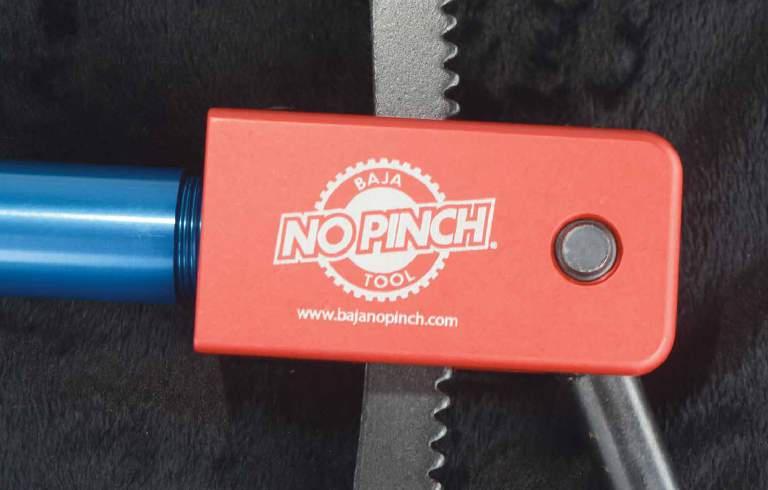

It wasn’t all heel-clickers and nac-nacs, though.
We had remembered to lube the beejezzus out of the tyre bead, and the Baja No Pinch claw slipped off quite a few times. That became a little annoying. Then, when the tyre began to protest, the claw on the tool roughed up the tyre bead a little.
At the end of it all, we’re going to chuck the Baja No Pinch into the bike tool kit and carry it. We don’t feel it’s a 100-per-cent, guaranteed certainty for getting a tough tyre on, but we feel it’s a good-enough piece of kit to
Above and right: The Baja No Pinch claw slipped off a few times because of the lube on the bead. It also started to chomp little pieces of rubber from the bead when the going got tough. It did the job, though.
justify its place on board when we ride. We’re tough judges, so that says a lot for the Baja No Pinch.
We’ve always managed to get the tyres over the rims with just tyre levers and a boot or sometimes a soft-faced
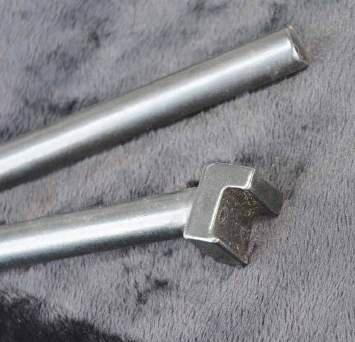

mallet – even the really tough ones – but it’s becoming a struggle and we’re starting to see a bit of damage. Rims are getting badly knocked about and pinching tubes is becoming way too common. We’re going to have to start carrying equipment to make sure we can get the job done. A few of tips to remember: R Lube the bead generously. A mild solution of dishwashing liquid and water, WD40, specialist lube like BeadGoop, soft soap…there are lots of possibilities, but you can take it from us, without lube, getting a tough tyre on and the bead to set will be nearly impossible. Just as an aside, we know of one seasoned pro who recommends petrol on a seriously tough bead. We’ve never tried it, but we saw him do it with our own eyes on a tyre we couldn’t get to set, and it worked like a charm


Speaking of tough, inflexible tyres, another difficult part of the process is lifting the tyre wall to get the valve stem through the hole in the rim.
We got tired – tyred? – of scraping all the skin off our knuckles and bending our fingers back until they nearly snapped, so we bought a valve puller. It’s a short, strong cable with a thread that screws into the valve stem. The cable threads through the hole in the rim and attaches to the valve. Pulling on the cable then drags the valve stem into the tyre and out through the hole in the rim. Job done. We need to do some practice with ours, but it definitely works. You can get them in lots of places, but we see Mal and Karen at Adventure Bike Australia have them for $20.
If the tyre’s a newie, you’ll be able to work from the opposite side to slip the valve stem in place because neither bead will be set. On a tyre already on a rim, you could break the bead on both sides to gain access to the valve hole in the rim and make it easy, but we have to say, “Oh, goodness me, no!” We wouldn’t break that second bead unless we absolutely had to.
Good luck with it.
R Tiny bites. When moving the tyre levers around and easing the bead over the rim, the smaller the bite of tyre, the less troublesome things will be
R Keep the rest of the tyre down in the well. This is vital on tough adventure tyres. On trail and enduro rims the tyre could be pushed down into the well with a knee while the levers were working the bead over the opposite side of rim. Adventure-bike rears will probably need tools. We bought the Motion Pro Bead Buddy 2 because we could get one at a local shop, but we weren’t impressed with it. Maybe our wheel was an odd one, but we couldn’t get the Bead Buddy 2 in place and locked on a spoke. It just wasn’t long enough. There’s other alternatives. Things like the No-Mar Extra Hand, vice grips, or, if necessary, a heavy-set mate wearing boots will usually do it, but not always. You may have to get inventive.
No matter what you choose it means carrying extra equipment, but it’s better than being stuck with a tyre repair you can’t complete
R A warm tyre is much, much easier to handle than a cold tyre. If possible, leave the wheel or tyre in the sun for a while before doing the change, or if it’s a repair, do the repair as fast as you can after the tyre has cooled off enough for you touch without burning yourself.






Above: A disc brake, highway ’pegs and LED lighting on the sidecar?
Adventure-ready for sure.
Left: Meandering through beautiful country. Ural ownership means low-speed travel. Owners get to see a lot more and arrive relaxed.
Right: A three-day ride organised by Ural Australia was designed to test the machines.

Despite having a 1200GS in the shed, Greg Jansen of Rocky Creek Designs has a deep passion for three-wheeled adventure. In 2017 he packed up his Ural sidecar rig and hit the trail. The common denominator among Ural owners is how much they all seem to enjoy themselves.


Every time I get on the Ural CT sidecar, it just gets better.
In 2017 I joined a heap of other owners for an amazing three-day ride organized by Ural Australia. The route included a bit of on-road and a bit of off-road and was designed to test our machines.
The ride kicked off in Glen Innes, NSW, on Friday with a welcome lunch and a
very interesting address at the sight of the Standing Stones by a bloke wearing a dress. He claimed it was the national dress of Scotland…right.
This was followed up by a fun ride out to the wind-farm development in Glen Innes.
Saturday saw us heading for Grafton via the old Grafton-Glen Innes road, a fantastic stretch of dirt meandering through beautiful country alongside the Mann and Boyd rivers, and I had a
bit of a chuckle along the way. Since first talking about buying a Ural I’d been constantly told they’re unreliable, and now I was on a ride with 25 of the Russian-built weapons. What could possibly go wrong?
As it turned out, there was some drama. The trailer being towed by the support vehicle did a wheel bearing and had to be taken back to base. As for the 25 ‘unreliable’ Ural outfits, they were trouble-free. There wasn’t even a puncture.


Above: Makes you wish you were there, doesn’t it?
Left: It’s nice to see the girls getting involved.
Below left: A ‘Retro/M70’. The old-world look and feel of the Urals is a big part of their attraction.
Below: Heading for Grafton via the old Grafton-Glen Innes road.


To date I haven’t had a single problem with my Ural, except I can’t stop riding the damn thing, even when there’s work to be done.
Scenic
Sunday saw us riding to Dorrigo and on to the new Ural HQ in Uralla, near Armidale. If you haven’t been along the Waterfall Way to Dorrigo, you must. It reminds me of NSW’s southern highlands: beautiful, rolling hills and a curvy, flowing road that’s fun to ride.
The feminine touch
What a wonderful weekend away. It was a great bunch of people, the roads were fantastic and the countryside was beautiful. One of the many pleasures of Ural ownership is you don’t – can’t – speed, so you get to see a lot more and arrive relaxed. Another very pleasing fact was in our group of 25 outfits, four where piloted by girls. It’s nice to see the girls getting involved, and a really nice change from the usual bunch of ugly old blokes.

Above: A great bunch of people. Ural owners always seem to be happy. Below: No need for a laptop and specialised software to interpret this warning indicator.


















three-day
Adelaide-based Will Fennell squeezed in a quick blast to the Flinders Ranges.
u

Proximity to many of Australia’s bucket-list outback riding destinations has to be one of Adelaide’s outstanding qualities. Whether it’s the Flinders Ranges, the Simpson, or the Birdsville and Strzelecki tracks, it’s pretty awesome living in a city where you can topcoat a motorcycle in red dust quicker than a couple of re-runs of Long Way Round.
But the challenge with those destinations is they invariably start and end with long, tyre-wasting stretches of tarmac. So with a Friday off work and keen to squeeze in a Flinders Ranges weekend, I set off, aiming to map out an epic three-day, dirt-filled Flinders Ranges’ adventure.
Above: Heading to dinner as the sun set over Rawnsley Bluff.
Below: In the Cradock Hotel. From left, Stephen ‘Harry’ Harris, local lady of the outback Rachel Hilder and author Will Fennell.
Right: Station tracks between Morgan and Yunta.
Ask my wife for a list of my most annoying habits and ‘Looking at maps on his bloody iPhone!’ would probably be in her top three. But let’s be honest: there are plenty worse habits a man could have.
Hema Explorer on the iPhone is a personal favourite because the


the phone doubles as a great on-bike GPS. I set a bunch of waypoints from the town of Morgan – my outback launch point – through sheep-station country to Yunta. From Yunta I planned to head northwest towards Hawker before setting up camp at Rawnsley Park. I’d spend Saturday among the magnificent Flinders Ranges before heading south again on Sunday via some previously unexplored routes.

Above: Public Access Routes in the Flinders are hidden gems. Below: There were a lot of gates on the Nackara to Mt Bryan route, but it beats the highway any day of the week.
Cloudy, with a chance of emu
Friday morning started with a ride from home, straight through the Adelaide CBD. While there are quicker ways out of the city, sitting at red lights on a loaded adventure bike catching the envious gaze of passing city workers always puts me in a very happy place.
Once out of the city a quick dash on the blacktop had me in Morgan, a quiet town on the banks of the Murray River. After a refuel, and abandoning a scaldingly hot servo coffee, I headed off for one of several station tracks between Morgan and Yunta.
The station tracks up that way are sublime. Wheel tracks are almost non-existent with narrow, orange-clay roads contrasted by the blue saltbush that line them. While there’s a tonne of station gates to open and close, I didn’t forget I was out adventure riding on a workday, so I wasn’t complaining. To add to the excitement, just as I was starting to really relax into the ride, two emus, each about two metres tall, suddenly ran out from behind some tall scrub. In a



millisecond life transitioned from, “How good is this!” to a 100kph hailstorm of emu. Luckily they shot out so fast I didn’t have time to brake. I slipped past the nose of one and behind the tail of the other. From above it may have looked like a
perfectly executed 1990s Holden recision Driving Team manoeuvre, but it was definitely a lucky escape.
I’d be happy to never win the lotto if I can keep having that kind of luck on a bike.

Top: Heading towards Mt Bryan with Harry on day three.
Below left: Stunning hilltops near Holowilena South Station
Top right: The third day’s track from Porcupine Range to Kapunda.
Right: Harry made a splash in a Parachilna Gorge water crossing.
After a lunchstop at the Yunta BP (the hotdogs are hard to beat) I headed northwest on the Arkaroola road towards Holowilena South Station. This is a stunning part of South Australia where some of the first hills of the southern Flinders Ranges come into view.
From there I headed over to Cradock before a brief run up the highway to Rawnsley Park, a great, bike-friendly camping spot. Although the restaurant is expensive, it was a great night with a band entertaining diners.
Phone a friend
Late in the day I came back into phone service at Hawker and saw my mate
Stephen ‘Harry’ Harris had been texting. Harry’s diary had cleared and he was keen to join the action. So after meeting in Hawker Saturday morning, we kicked off with a run along Moralana Scenic Drive. This was a great little warm up before we headed out past Wilpena Pound and onto the infamous Bunyeroo Gorge Road.
In the winter months and after rain Bunyeroo Gorge is an adventure-rider’s paradise. It’s a meandering roadway that winds back and forth across a rocky creek running with gently flowing, crystal-clear water. We weren’t lucky enough to enjoy any water this time, but it was still a great run.
After a stop in Blinman we headed out on the Glass Gorge Road to a Public Access Road (PAR) entered from Moolooloo Station. It was only 30km or so back to Angorichina from there, but Harry and I reckoned the technical sections of that PAR made it one of the best Flinders tracks we’d ridden.
From Angorichina we headed out through the last remaining puddles in the Parachilna Gorge before a brief stop at the Prairie Hotel. From there we rode back to the Cradock Hotel where we met up with my wife, Kate, and local publican Dickie and his partner Rachel Hilder put on a cracking dinner for us all. It turned out Rachel used to muster sheep on the steep hills we saw on the PAR. Harry and I agreed that would’ve been a tough gig, even on a 250.
Day three was time to head back to Adelaide, but the fun was far from over.
After a fuel up in Hawker we headed east along the south side of the Druid Range. This is another spectacular and less-travelled part of the Flinders, although without a word of a lie we must have seen several hundred ’roos that morning.
After Black Range we turned towards Yunta, then briefly got on the Barrier Highway before turning off again just north of Porcupine Range. We had a great time on station tracks to Mt Bryan, just north of Burra.
At Burra Harry peeled off to his farm near Snowtown, but before leaving he pointed me in the direction of the Old Adelaide Road, a sweeping dirt thoroughfare that leads to Kapunda. It was a great bonus to find even more dirt on the way back to Adelaide, topped
off by meeting a farmer on an old ag bike (complete with dog on the tank) moving sheep on the road. We ended up having a good old chat about all things life and motorcycle before I headed off to Kapunda and a short bitumen stretch home.
All up I spent three full days riding, with less than three hours of that on the asphalt.
I’d say that was mission accomplished.



Words: Andy Strapz
Andy
Strapz has vision and
he assumes everyone else needs glasses. It’s a safe philosophy.
Main: Washes of ball-bearing gravel can be freckle-puckering.
Above: It’s amazing how many riders aren’t fazed by taking a blind righthander in the right-side wheel track.
In my past life in a hospital emergency department (workin’ there) the last ‘S’ in the well-known ‘KISS’ principle was taken to stand for ‘safe’.
Rocket surgery isn’t one of my strong points, and I like those short-but-instructive sayings that point the way in life. They’re little groups of words I can draw on in those ‘Oh shit. I smell Dettol’ moments…things like: ‘if in doubt, power out’, ‘keep a tight chain’, and ‘look where ya wanna go’. They’ve all helped keep my bones on the inside of my skin over the years, and the KISS principle might have been developed just for me.

And the safest motorcycle-riding maxim in my book has to be ‘can’t see, can’t go’.
You’ve probably heard of the high country down here in Mudtoria. You also probably know that, whether your aim is to get dirty or stay clean, Gippsland is a little corner of motorcycling heaven. The problem is there are lots of other road and trail users with similar ideas who lack experience, courtesy or neurons. Some take ‘dickhead’ to an art form. Faeces will occur. No amount of planning and care will stop a P-plated knob in a Troopy launching a metre into the air from a steep, side-road T-junction

as you ride along minding your own business. Yep. It landed smack-bang between me and my riding mate.
The big guy wins
I’ve ridden more often than I’d like to recall with others who aren’t fazed by taking a blind righthander in the right-side wheel track. Some corners in the lumpier parts of this Great Brewed Land are tight. Drop-offs can be octaverising and washes of ball-bearing gravel can be freckle-puckering. One of the toughest skills for any rider to master is changing direction in the roly-poly gravel moraine between wheel tracks on

corners, and, as usual, the game is obviously weighted in favour the biggest vee-hickle. Dismounting, then walking up to a tight, blind corner before backing in my Mercurochrome bottle can seem like a reasonable tactic in moments of over-thinking, but another simple saying sums up the situation: ‘might is right’. Being legally blameless doesn’t help when the first responders are scraping you off a five-rail roo ’bar with a putty knife.
Bonnet ornaments


Coming face-to-winch with Ol’ Mate in his fourbee is to be expected. For the driver to be arguing with his kids, checking the GPS laptop on the glovebox lid while eating a sanga, steering with his knees and adjusting the landing gear with his other hand should also be a given. I cringe when I see riders leaving themselves with no option but ending up a fishing-rod holder on a bullbar if that driver happens to be just around that next bend.
This little black duck adheres to yet another simple motto: ‘can’t see, can’t go!’


When you least expect it...expect it!

I consider myself warned.

Vince Strang Motorcycles is the place for all DR650 advice and gear-up parts. That’s why VSM is also the best place to buy your fully prepped adventure DR650. We have the experience and knowledge and we have the catalogue of parts. Ride in with a stock DR, ride away totally fitted-out. Discuss requirements with Vince and VSM will supply your built-to-spec DR. Station bike, city commuter or full-blown acrossAustralia adventure bike, get the lot – or anything in between – at VSM. Shop ONLINE for our huge range of DR650 parts and accessories www.vsm.net.au



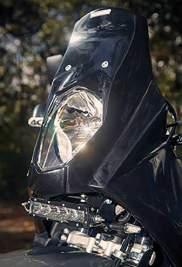


Congratulations Julia Maguire and Andrea Box.
The BMW International GS Trophy is tough and technically challenging for all who participate. Just to qualify for a team is an achievement in itself, but to do it in the midst of severe thunderstorms and riding on mud as
slick as ice required something special. Julia Maguire showed she had the talent and skill not only to compete in these conditions, but to place second at the recent BMW International Female Team qualification held in South Africa.
Right from the very first it was clear Julia was a serious competitor and had the class to match the field. “I was expecting it to be challenging, so I’d been practicing on a course my parents helped set up at their property,” said the Melbournebased rider.
Following on from the successful inclusion of a female team in the 2016 event, this year BMW upped the ante to select two female teams for the 2018 GS Trophy to be held in Mongolia. While the ladies were there to compete against each other, there was also a wonderful camaraderie within the group, which, for Julia, was one of the best bits. “I felt like we were all mates from the first moment we met at the hotel, and it was one of the highlights of the trip”.
Also in South Africa at the qualification was Adventure Rider Magazine contributor Andrea Box, and while she missed out on a place in the teams, she promised to return.
4day 2-6 May 2018
“It’s been an inspiring experience and I’ve come away with a new level of motivation,” said Touratech’s United People Of Adventure rider.
With her place in one of the teams secured and only a few months until the GS Trophy kicks off in Mongolia, Julia is now focused on training.
“I’ll be riding as much as I can and upping my strength and fitness so I can handle the long days on the bike,” she said.
We’ll be following the Aussies throughout the event and congratulate both girls on their performance so far.

Australia will field a men’s team as well, and after fierce competition at the qualifier in Victoria, the Aussie jersies went to Shane Guttridge, Simon Turvey and Michael Haley. Aussie! Aussie! Aussie!




There are plenty of challenges when it comes to adventure riding, which is part of the attraction. But mechanical failures and crash damage can bring your ride to an early end. Miles Davis has a few tips to keeping the problems to a minimum.

If your bike isn’t maintained properly your dream ride might turn out to be less than ideal.
Obviously each brand has its own servicing recommendations and it’s a good idea to follow these. On top of scheduled servicing it’s a great idea to have a pre-ride checklist to make sure all the key items are up to scratch. Some are obvious, but others possibly not, so let’s have a look at few:
R Oil leaks and oil level. Know the process for checking the oil level on your
Above:
bike (hot/cold? Left for 10 minutes after running? Dip stick screwed in or dipped? Things like that)
R Tyre condition, Check the side walls, tread depth and pressures
R Check brake pads, discs and calliper bolts
R Air filter. If you’ve been riding in dusty conditions, check your filter – and prefilter if there’s one fitted – regularly.
A dusted engine is a wrecked engine, and an expensive repair
R Wheel bearings. Shake the wheel side-to-side to see if there’s any excess
Below: Split some of your tools and spares between the gang so you don’t have multiples of everything.


play. It makes a lot of sense to pack some grease around the bearings before fitting spacers every time you have the wheels off
R Chain and sprockets. Hooked teeth are a dead giveaway, or pull the chain where it wraps around the rear sprocket. The chain should only pull away by between one and two millimetres. Any more than that and it’s showing signs of wear
R Steering-head bearings. Apply the front brake and rock the bike back and forth, try to have sight of the steering head or use a finger on the junction of the triple clamp and steering head to feel for excess play. Then raise the front wheel off the ground with a centrestand or bike lift and ensure the steering moves freely lockto-lock with no notches
R Suspension. Check for leaks. Look for a smooth action with no freeplay in any linkages
R Cables. Check for smooth operation and visible signs of wear. Use a cable-lube tool if the action is getting stiff. Put brake cleaner through the cable first before using a graphite or Teflon lube
R Headlight. Check for high and low beam, cracks or other visible damage
R Battery. It’s ideal to keep your bike on a trickle charger, especially if you don’t ride frequently. With older batteries get them checked and replaced if in doubt
R General look over. Have a conscious look at panels, nuts, bolts and all the visible parts of the bike.
Regardless of your preparation there’ll be times where you need to look at roadside repair. It’s best to have some key items with you so you can keep the journey on track. You need to think carefully about what to carry, as overloading
u
with things you are unlikely to need will cause its own issues.
If you’re in a group, split some of your tools and spares between the gang so you don’t have multiples of everything. Not everyone has the gift of fixing mechanical things, but if you have the tools and spares to suit your bike you’re likely to find someone who can help get the fix done. But if you haven’t fixed a flat or changed your oil before, you should probably learn the basics so you know what you’re doing the first time you need to on the side of the road. Like everything, practice makes perfect. The first time you try you might as well be in the comfort of your own shed, preferably with a friend who has more experience to guide you. Watch Youtube, watch when others are doing repairs and build your knowledge.
There are some great model-specific toolkits that are worth looking into, but if you’re looking at building a kit for yourself, here’s a few things to consider...
R Spanners to suit assorted fittings plus front/rear wheel axle nuts and spark plug
R Allen keys and/or Torx drivers
R Tyre levers (I prefer ones with a small, pointy tip)
R Valve key
R A bead breaker
R Pliers
R Spoke key
R Pump, CO2 bottles or compressor
R Rope, in case you need to do a tow. A great technique is for the bike being towed to wrap the rope a few times around a footpeg, then simply press your foot on it. If things get a bit out of control you can lift your foot and the rope will come loose. You don’t want to drag a bike down the road on its side.
R Tubeless repair and/or tubes, spare valve and valve cap
R Clutch/front-brake lever
R Brake pads
R Cable ties, safety wire/duct- and electrical-tape
R Metal putty
R Hose clamp
R Assorted nuts and bolts to suit your bike
R A spare chain link
R Air filter/filter sock (if foam, pre-oiled in ziplock bag)
R Chain lube
R Spare bungy straps
Adventure riding gets us to all kinds of wonderful and sometimes remote places. So it’s great peace of mind knowing you have a well-sorted bike as well as the right tools, spares and knowledge to do some
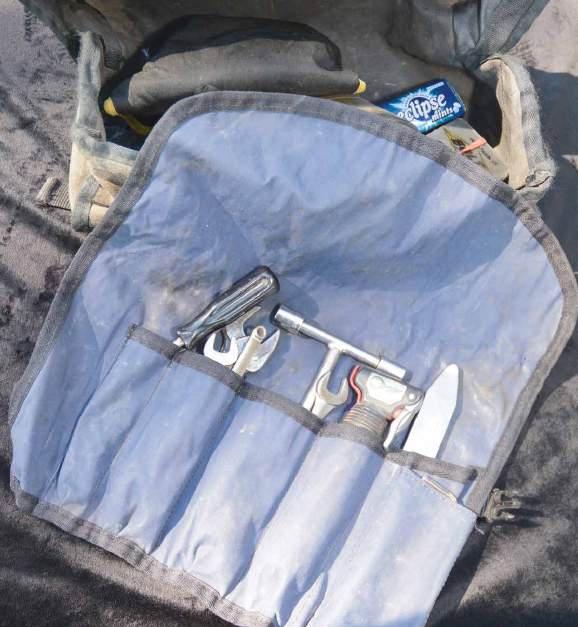







of
And don’t ever forget: if you’re in doubt about some facet of your bike’s mechanical condition and you aren’t totally confident about assessing and dealing with it yourself, get the help of a
Ask your local dealer or
for help.
Happy trails.














Log on to
www.advridermag.com.au/store and keep the adventure throbbing…
Thousands of kilometres of premium dualsport and adventure riding on route sheet and as GPX files. Complete with fuel and accommodation contacts and info, route section times, stories and heaps more.




Serious hard-core adventure riding at its best, all captured on camera and crafted into





The ultimate adventure-riding distress beacon that should be part of every adventure rider’s kit. Provides six independent means of rescue:
406MHZ transmission
121.5 MHZ homing signal
GPS location
Visual strobe
Signal mirror
Whistle on lanyard Manufactured in Australia. 10-year battery life. 10-year warranty.


The Condamine River in southeast Queensland is a magnet for bikers and 4WDs alike. Its 14 river crossings are legendary. Karen Ramsay took the plunge for a fifth time.
y latest traverse of the Condamine River crossings was with a girlfriend, Andrea Brosnan. The plan was to take the bike to her place, then Andrea and I were to go riding for the day.
Down, but not out
I first met Andrea when she came running up to me in the main street of Tenterfield before I’d even got off my bike. Since then, she and her husband, Dave, have had amazing adventures, including
Dave riding from London to Magadan and Andrea riding in Mongolia. Their stories would fill a book. Andrea regularly rides the Condamine crossings which are almost in her front yard, and I’d been across four times and only dropped the bike once.
Andrea planned for us to ride the crossings, Barlows Gate, Maryland, Stanthorpe and, of course, stop for coffee and cake. It was a showery morning and striking out on the Condamine River Road saw our tracks the first of the day.
Six crossings in we were
really hitting our stride. We could almost taste the cake in our near future when, on the other side of Mill Crossing, we saw Andrea’s sister feeding the horses in the paddock. Andrea rode over no problems, but as I crossed, looking up at the action ahead, I suddenly found myself with a mouthful of creek water.
Nuts
The first job was to get the bike up.
I didn’t think it was very deep, but I plunged my hand into the water to grab the handlebars and

Left: Four blokes were swarming over the DR like it was a factory bike at a Dakar pit stop.
Above: It was shallow, but…
Below: The Condamine River in southeast Queensland and its 14 crossings are legendary.
all I could reach was the mirrors. Andrea waded in and together we lifted the bike upright before pushing it on to the grass. I hit the start button and…nothing.
We walked around the bike wondering what to do. The bike still had power, so that was a positive. And I had a tool kit. That was another positive. However, both
of us usually rode with our husbands who took over in these situations. Plus, this was a DR650 – these things just kept going, didn’t they?
For two usually strong, sassy and independent women, it was rather embarrassing. I think it was at that point Andrea told me she normally dropped the bike once each time she does the crossings. And she had a stack of paper air filters at home so she could simply pop in a new one.
We stopped laughing at the situation long enough to get the tools out, only to find there were a couple of 12mm

spanners but no 10mm. There were no screwdrivers, either.
Thank goodness for always packing the multitool.
The first 4WDs of the day turned up and Andrea flagged them down. They had a 10mm spanner but also made disapproving, though wellfounded, remarks about the woeful wiring setup under the seat.
But there was still no joy from the DR650, so we decided to push the bike into the paddock.
Just as we were contemplating our options we heard ’bikes in the distance. Hooray! We headed towards the road to flag them down.
They were coming fast and we stopped walking to listen. We looked at each other. KTMs? Surely not.
Two of the most unmechanically minded women on the eastern


Above: It’s not easy
see why

seaboard and a DR650 being rescued by KTM riders would be the ultimate humiliation.
We decided if it was KTMs we’d wave them on or hide.
We nearly fell over laughing when we caught a glimpse of orange flashing though the trees. We were standing as nonchalantly as we could – a bit like a couple of kids who’d done something naughty and thought they’re doing a good job to cover it up. ‘Nothing to see here,’ said our demeanour.
They skidded to a halt in a flash of orange, dust and water. The humiliation intensified when it was established I’d met Joe before and he and his father, Gary, knew my husband, Dave. Dave wastes no time in making disparaging remarks about KTMs – all in jest of course – but now it was going to come back and bite me on the bum.
Fortunately for us they didn’t hold Dave’s prejudice against us.
The next thing we knew, four blokes were swarming over the DR like it was a factory bike at a Dakar pit stop.
Suddenly the familiar burble of the DR sounded through the gorge. The blokes rode off, as quickly as they’d arrived, in a triumphant blaze of orange. Meanwhile Andrea and I left the bike
running, as instructed, while we repacked and got ready to ride. It was by now a couple of hours after we’d started and we had coffee and cake in our sights. I jumped on, gently eased open the throttle and…it died.
‘Not to worry,’ I thought and started it again.
The same thing happened. And again. And again.
What’s that saying about people who try the same thing over and over and expect a different result?
Joe had said something about if it started to run like a hairy goat just let it sit for 10 or 15 minutes then it should be right to go. We let it sit, but there was no change.
We took out the air filter and gave it another thorough dry, but then couldn’t work out how to get it back in.
I wasn’t laughing quite as much now so Andrea, bless her little red boots, went to her sister’s and got snacks for us. While an apple may have helped get me laughing again, and got the air filter back in, it didn’t get the bike going.
It was official: I’d managed to kill a DR650. We left it there in the paddock.
Andrea got into some dry clothes thanks to her sister, then got a lift
home. She insisted I ride her XT250 back. It was the second crossing along when her bike stopped dead and refused to go.
How could I kill two bikes in one day?
For the second time Andrea waded out to rescue me. We pushed the XT clear and she said it was common with her bike. When the cold water hit the header pipe it often stopped.
The rest of the afternoon went reasonably smoothly. We were determined to go out in the car for what was, by then, a very late lunch. Andrea entertained people at the café as she chased around after a bush turkey while a currawong stole food off my plate. We were both in pain from the all the laughing throughout the day. I think it goes to show you don’t have to go for a big ride to enjoy yourself.
As a footnote, the DR had a few days rest at home and was as good as new.

WhatI’ve
R KTM riders are nice people
R Don’t judge a rider by their bike
R Look at how things fit together before you take them apart
R DRs really are indestructible
R A sense of humour is the best tool you can have in your kit

The new small-bore adventurer from BMW is getting plenty of interest, especially from the folks at SW-Motech. Have a look at the gear available for the bike already!


The new, tougher aluminium adventure rack from SW-Motech is built for
3 Generous storage surface
3 Simple assembly to original attachment points with bikespecific attachments
to
3 Made of low-weight and durable, four-millimetre aluminium alloy
3 Powder coated (black version) or anodized (silver version)
Great adventure-riding gear from the people and companies who understand adventure riding.
KLiM woMEn’s ArtEMis jAcKEt
Tough and equipped for international travel.
R Comfortable enough for all-day rides
R Excellent cargo capacity
R Female-specific, comfortmapped ventilation
R 10 adjustable ventilation ports
R Clip-open collar
R Synch straps
R Robust materials on impact zones
RRP: $1045
Available from: AdventureMoto Web: adventuremoto.com.au

AE Motosports KLr650
HEAdLigHt guArd
Protect your costly headlight from flying debris and possible crash damage.
R Lazer-cut and manufactured in steel
R Galvanized and powder-coated
R Supplied with fitting hardware and instructions
R No drilling, welding or cutting
RRP: $119.95 plus postage
Available from: Adventure Bike Australia Web:
KLiM BAdLAnds pro jAcKEt
An upgrade for the top-of-the-line Klim.
R Gore-tex three-layer pro laminate technology
R Abrasion-resistant 500D Karbonite ripstop panels in impact and wear areas
R 3M Scotchlite reflective panels and trim
R YKK water-resistant zippers
R Custom D3O/Klim armour system – Aero Pro
R Six external pockets/ four internal pockets
R Easy-access hydration bladder
R Standardised Jacket-to-pant integration system
RRP: $1495
Available from: AdventureMoto Web: adventuremoto.com.au

VsM dr650 oVErsizE front disc
Beef up that DR650 front stopper.
R More power in the brake
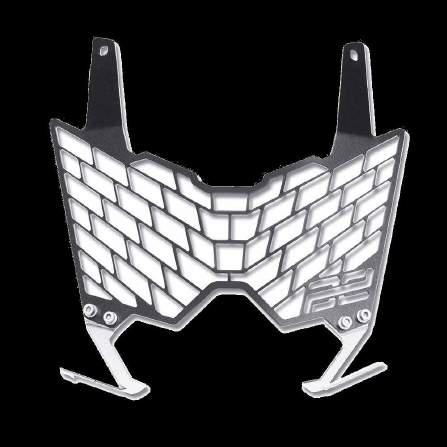
R Rotors are laser-cut from a high-carbon-content 410 stainless steel, lap-cross hatch ground, and then heat-treated Finished rotors are mounted on a floating, black, steel carrier for durability and strength Floating pins are an oversized, CNC-machined, stainless rivet with stainless wave washer High-temp paint is applied to surfaces like cooling holes and edges

RRP: $330
Available from: Vince Strang Motorcycles Web: vsm.net.au
A new chapter with the Desierto IV for the BMW R1200GS (LC).
R Distinctive looks and maximum ride comfort
R Characteristic Desierto sweep above the headlight
R Distinctive wedge-shaped side sections are available in black, grey or white
R Windscreen is at a steeper angle than the original
R Standard adjustment capabilities retained
R Touratech offers four different versions of Desierto IV: a small version for more sporty riding, and a higher screen for touring and travelling. Both are available in a clear and a tinted version.
R For the full range of Touratech Desierto fairings, see the website

RRP: $675.57 plus postage
Available from: shop.touratech.com.au Web: touratech.com.au
A lightweight adventure glove.
Ideal for Spring and Summer.
R Cuff and topside have four-way Spandex
R Topside includes full-grain leather, hard and soft TPR, and a reflective black panel
R Wide Airprene tab and velcro
R Sizes S to XXXL
Available in black or yellow.
R Lifetime warranty
R All mounting hardware is aircraft-grade aluminium
R 100-per-cent waterproof, durable 24oz tarpaulin
PVC with seam electronically heat-welded
R Includes two lightweight saddlebag liners
R Removable stiffeners
R Firm internal back plate
R UV-coated outer material
R Main compartment L38cm x W20.5cm x H35.5cm
R 27.5l per side
RRP: $279.95
Available from:
Selected stockists Web: linkint.com.au


A premium, multi-material adventure touring boot. Waterproof and highly breathable Drystar membrane for excellent all-weather performance
RRP: $74.95
Available from:
Moto National Accessories
Web: motonational.com.au

Lateral ankle protection with biomechanical blade-link between the upper boot and the lower foot structure. Lightweight, advanced, polymer shin-plate

R Medial and lateral dualdensity ankle-protector disk incorporated into boot chassis
R Extensive front and lower-rear accordion flex zones
R CE certified.
R Sizes US8 – US13
RRP: $399.95
Available from: All motorcycle stores Web: monzaimports.com.au
Lightweight, precision-machined steering dampers to help control your bike in any situation.
R Available for a range of road and adventure bikes
R Several mounting options available
R Available in black, silver or champaign
R Five-year warranty
R 100-per-cent serviceable
R Engineered and produced in Holland

RRP: $485 - $766 depending on model
Available from: Teknik Motorsport Web: teknikmotorsport.com

rAdiAtor gu
You don’t want to be stuck on the side of the road or on a trail waiting for someone to find you. Protect your radiator with a Rad Guard.
R Easy to install
R Bolts on to existing mounting points on the bike
R Allows adequate airflow so cooling is not compromised
R Made of highgrade aluminium
R Three-year worldwide warranty
R Australian made

RRP: $259. On special now for $229
Available from: Rad Guard Phone: (02) 6658 0060 Web: radguard.com.au

A limited edition of Andy’s canvas saddlebags is now available to celebrate the 20th anniversary of Andy Strapz.
R Individually numbered
R Made in Melbourne
R Outback ochre version of the tried-and-crashed, 17-ounce Aussie canvas
R Bigger side pockets
R Rear closed via roll top
R External pocket on front
R Reflective panels on pockets
R Cargo net on top of closing straps
RRP: $495 per set plus freight
Available from: Andy Strapz Phone: (03) 9786 3445 Web: andystrapz.com


Complete with SAS-TEC protection and adjustable waist and arm belts.
DuPont cordura 500D construction
Coolmax breathable mesh liner
3D air mesh panels
Removable Gore-tex liner
Waterproof external pockets
Three inner pockets and a pocket for your mobile
Map/document pocket
Air-vent zips at front, back and arms
RRP: $900
Available from: heldaustralia.com.au

MAstEcH KLr650 crAsH BArs
A good look and a great fit.
R Constructed from 25mm carbon steel
R Powder-coated black finish
R Easy to fit
R We hope they stay shiny and unscratched
RRP: $247
Available from: Adventure Motorcycle Equipment
Phone: 1300 883 908
Email: adventuremotorcycle.com.au

The editor’s first choice for tough going.
R CE-level approved protection and quality
R Built for Dakar and serious off-road riding
R FCS external dual-pivot ankle brace system
R Enduro anti-slip replaceable lug sole
R Vented for racing or extreme conditions
R Integrated mid-sole with stainless-steel shank
R External injection-molded plastic protection
R Stainless-steel toe caps
RRP: $599
Available from: formaboots.com.au or any Forma dealer
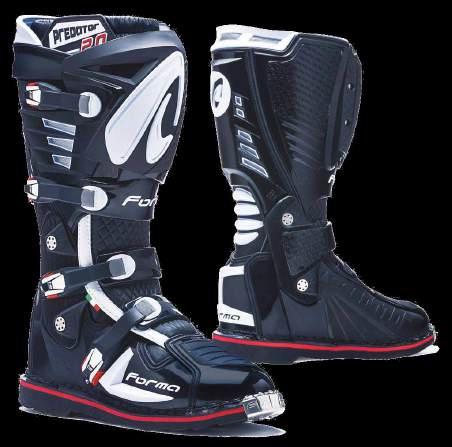
A handy selection of nuts and bolts.
R 54 pieces of factory-style hardware including: M5, M6 and M8 hex flange bolts, locking and non-locking flange nuts, washers, screws and a rear fender t-nut

R For late-model motocross and off-road Japanese motorcycles
R The number-one aftermarket fastener kit
R All hardware meets or exceeds OEM specifications
R Designed and assembled in the USA with components from the USA and Taiwan
* Part number
#BM54TRKPK
RRP: $19.95


Available from: Pro Accessories Web: proaccessories.com.au
Premium, USA-made bike luggage.
R Lifetime warranty
R V-shaped base to accommodate off-road and adventure models
R New self-adjusting hooks attach bag with soft ties connecting to the bike
R Made from top-quality Tri-Max ballistic nylon
R Protective material prevents slipping or marking
R Clear map pocket is touchscreen-device friendly
R Main compartment measures 30.5cm x 18cm x 23cm (standard)
R Holds 12 litres standard/17 litres fully expanded
RRP: $129.95
Available from: Selected stockists Web: linkint.com.au

A ‘Gore-tex, highly breathable and waterproof-membrane boot from one of the biggest names in bike boots.
R Tongue-in-groove rear of calf panels protect the Achilles tendon
R Bonded non-slip lug sole
R Replaceable micro-adjustable cam-lock buckle system with memory-retention straps
R Full-grain, microfibre material upper
R Nylon inner sole with removable arch-support pad
R Slim, cool, non-bootie design
R Inner anti-wear heat panels

R Available in Black 41 – 48 or Brown 42 – 48
Tag Metals is under new ownership led by Eddie Cole, founder of Pro-Taper.
R Constructed from 2014 series aluminium
R 1-1/8” Tapered to 7/8” for use with standard grips
R Anodized and shot-peened finish
R Laser-etched positioning grid
R Four-millimetre wall tube, double-butted aluminum design
R Knurled left-grip area.
R End plugs increase grip life
R Five factory replica bends available



RRP: $649.95
Available from: Your local motorcycle dealer Dealer enquiries phone: McLeod Accessories 1300 300 191


RRP: $89.95
Available from: Your local dealer Web: jtr.com.au
scott duALrAid dp
jAcKEt And pAnts
A great outfit in colours to suit the BMW owners.
R Waterproof labyrinth closure system
R SAS-TEC protectors
R Reflective elements for best visibility
R TPR rubber applications
R 76cm connection zipper
R Stretch panels for best action
R Climate comfort by ventilation system

Super-compact emergency glasses you can stash for when you forget your prescription specs.
R Fold down ultra-thin for storage
R Spring open and sit on the nose
R POD sticks to your phone or fits in a wallet
R Keychain Case slides into the case and can hang on a keychain
R Available in +1.0, +1.5, +2.0 and +2.5
RRP: Jacket $649.95. Pants $399.95
Available from:
Your nearest Ficeda dealer Phone: 1300 437 711 Web: ficeda.com.au

RRP: Glasses $32 plus postage and handling
Available from: Exclusive to Rocky Creek Designs Web: rockycreekdesigns.com.au




TRAX ADVENTURE - THE BENCHMARK IN ALUMINIUM TOURING CASES.
Built without compromise. TraX Adventure are designed to be extremely tough and made from 1.5mm aluminium, further strengthened by lid and side wall ribbed contours. Weighing between 4.6 and 5.4 kilos, the TraX Adventure is one of the lightest cases available in it’s class.


Side cases are available in 37 and 45 litre sizes, the top case has a 38 litre capacity and the range starts at $621.
So whether you’re taking on an off-road challenge, touring the open road or just beating the rain to work, get a case that’s 100% adventureproof.















If jackets could have a split personality, they would probably look like this. Common grey by day, incredibly luminous at night; when placed in the range of a car’s headlights, it’ll light up completely!
So how does this radiant fabric work exactly? Basically, it’s coated with lots of tiny beads. They act as satellite dishes, reflecting light back to its source, even from long distances. Just like a road sign! To find out more about the full Macna range and Macna NightEye technology visit www.linkint.com.au


